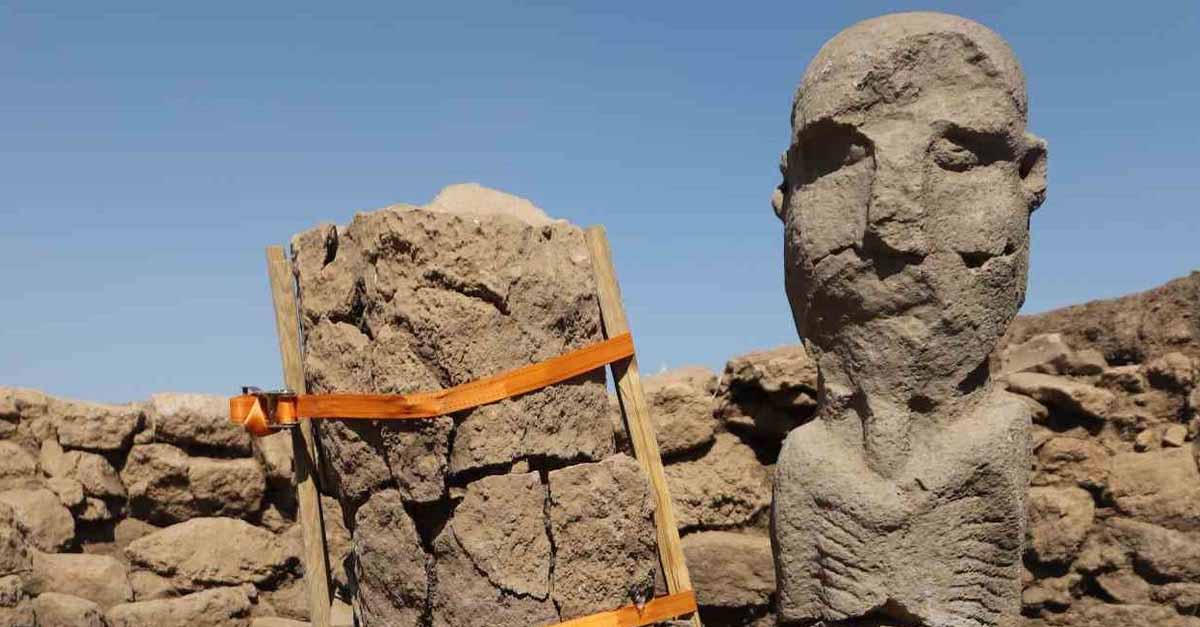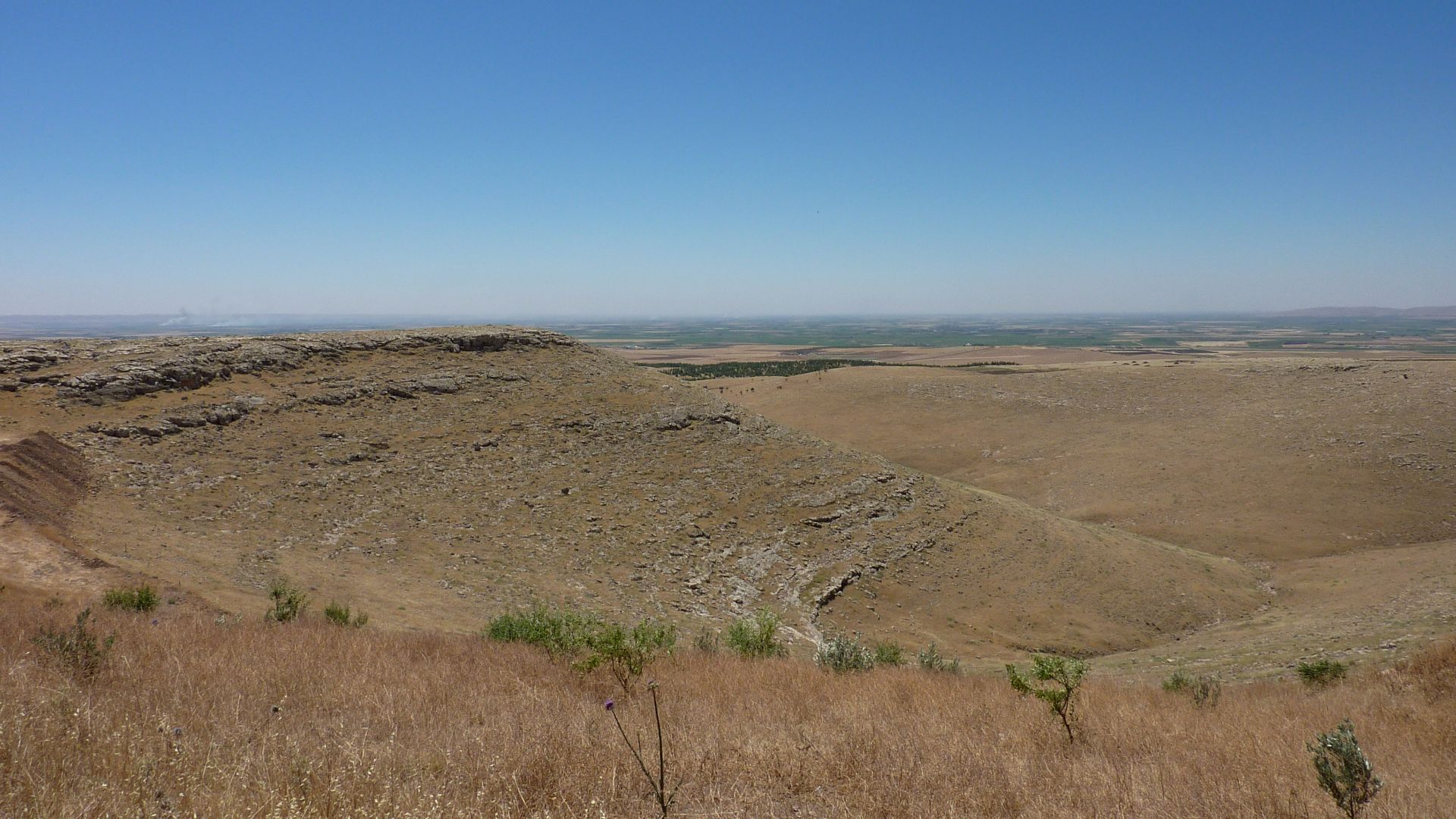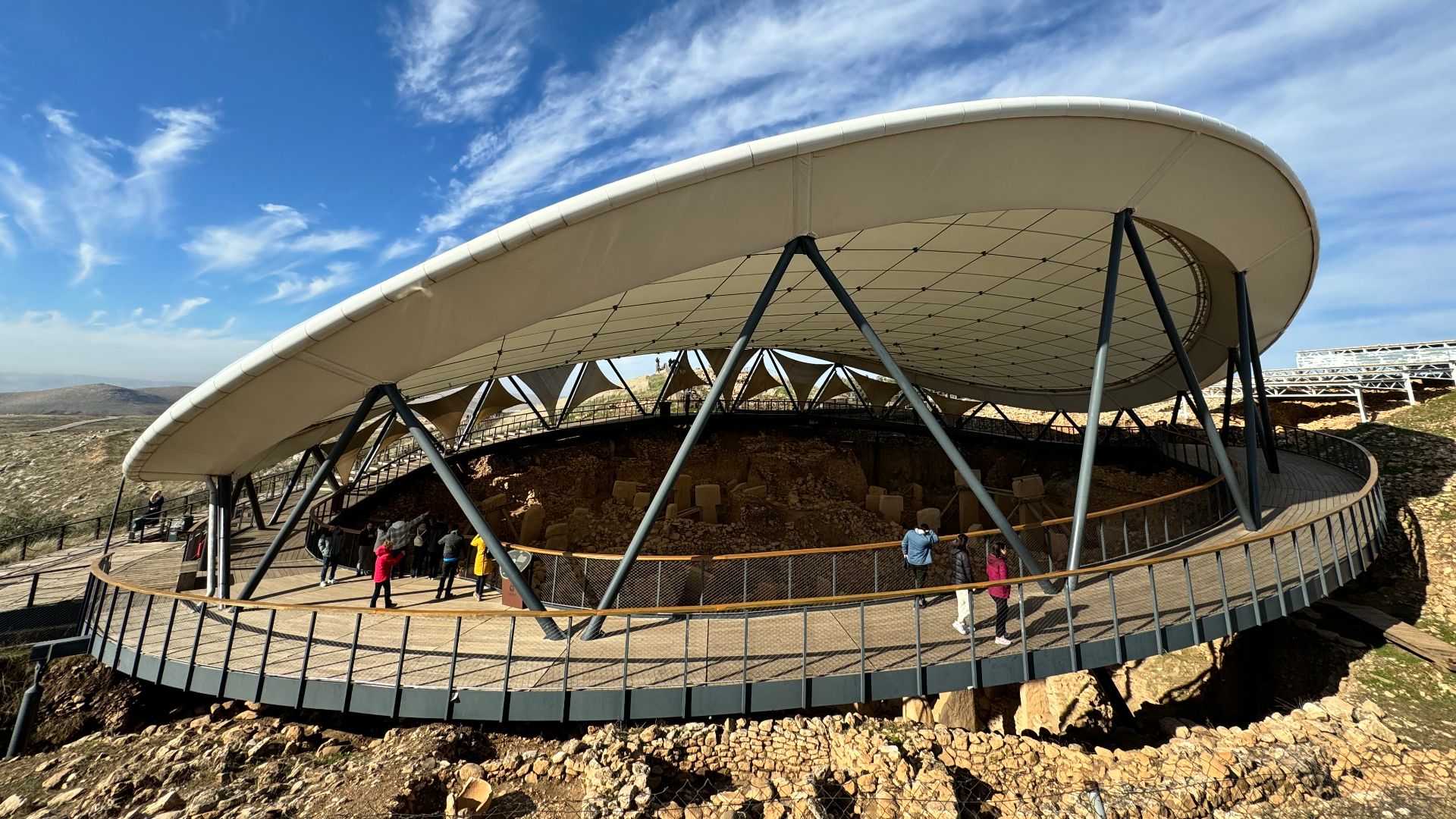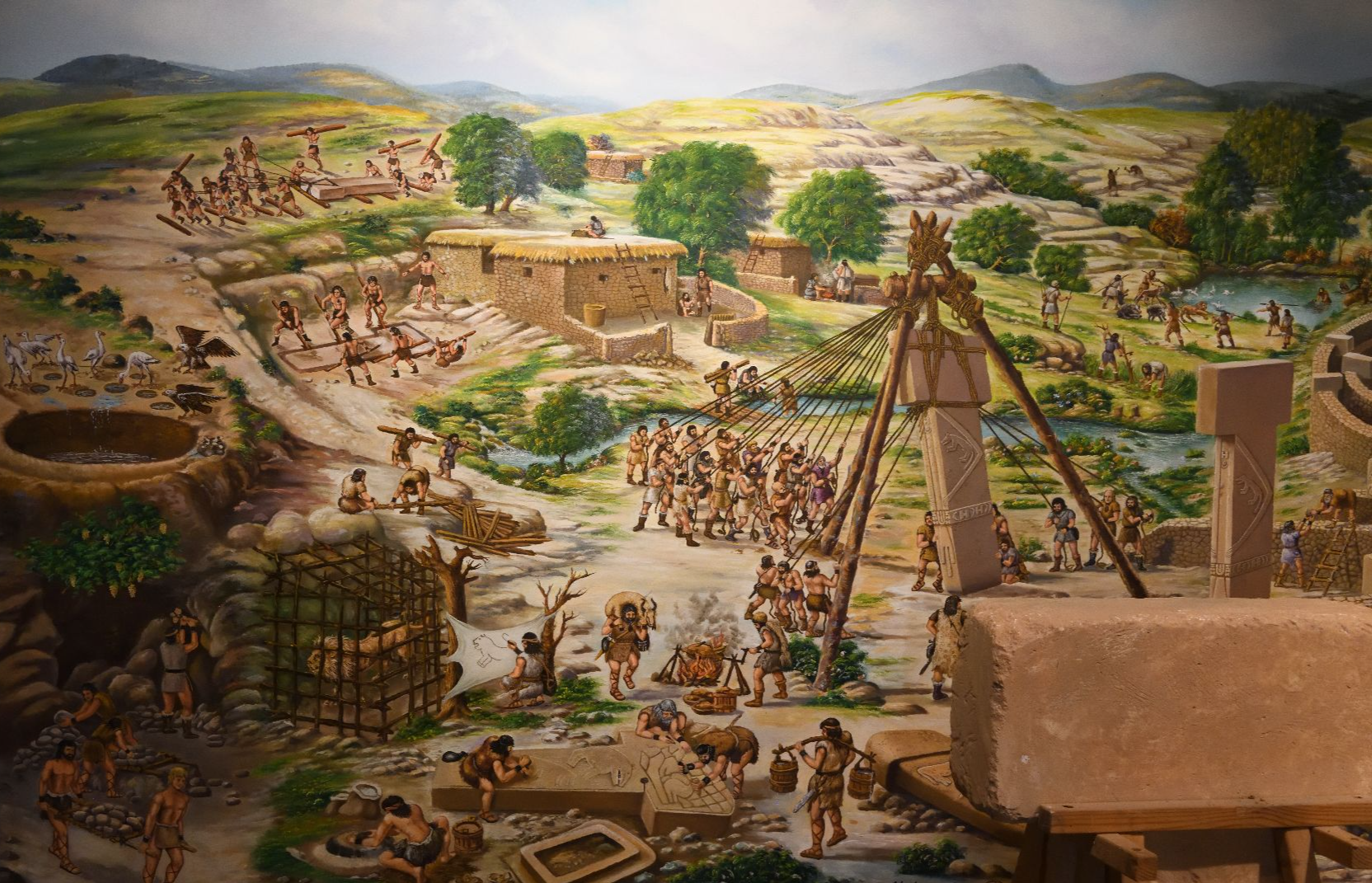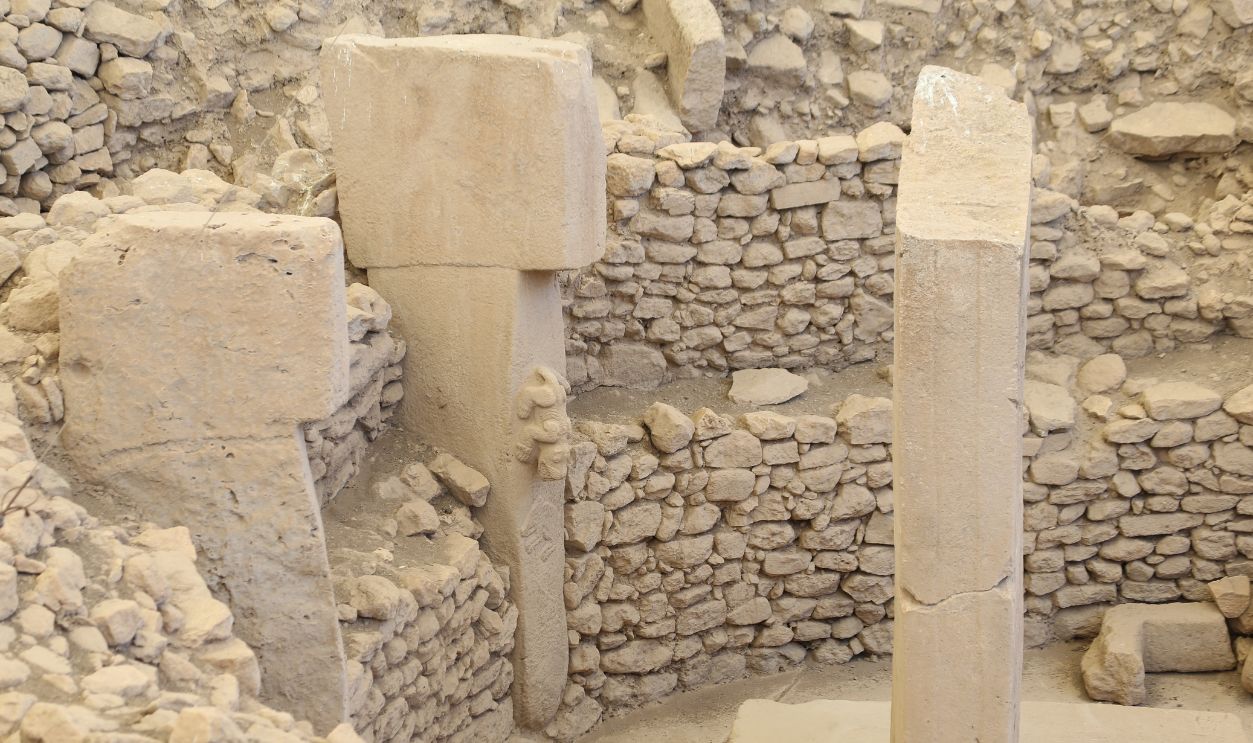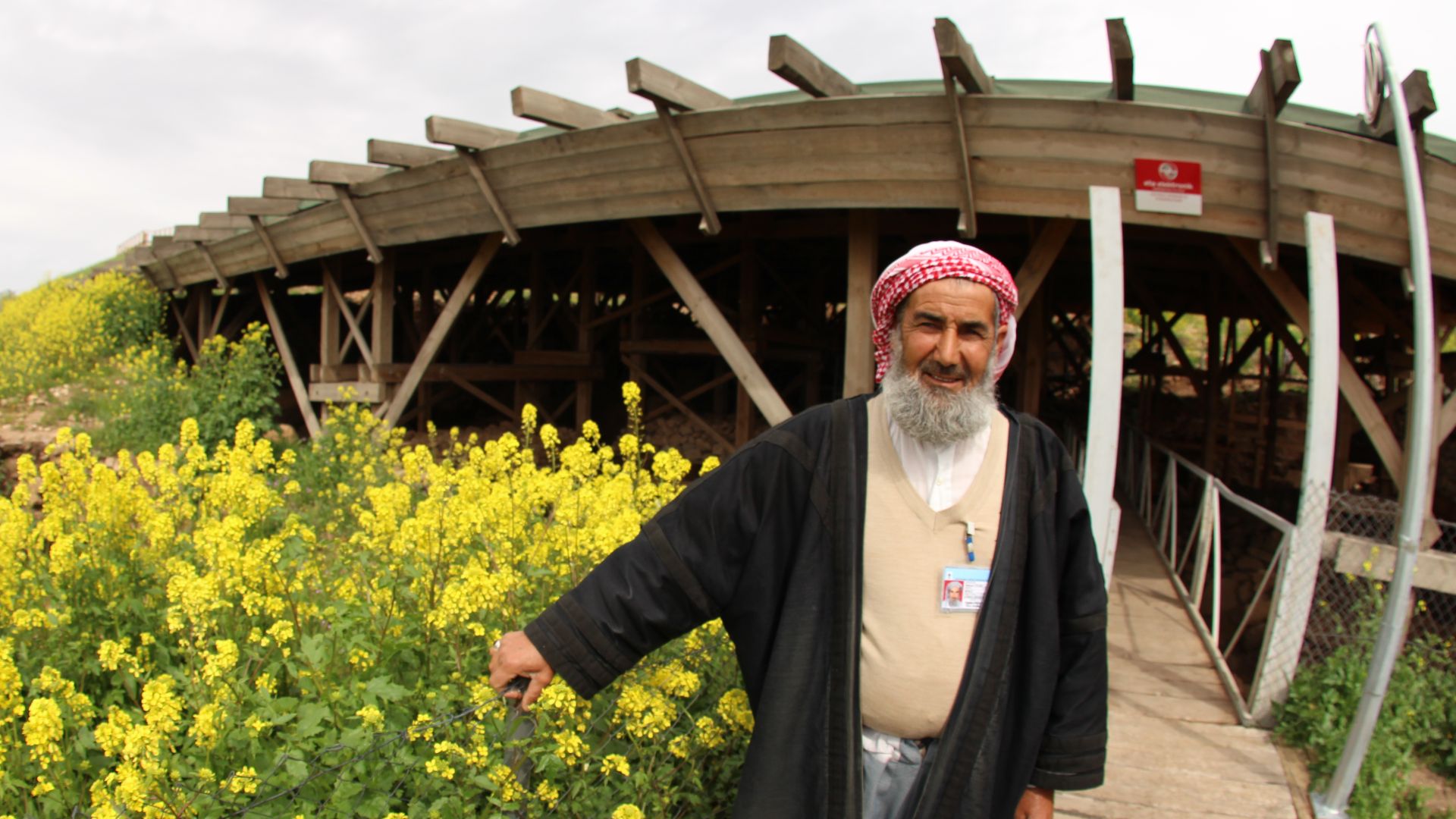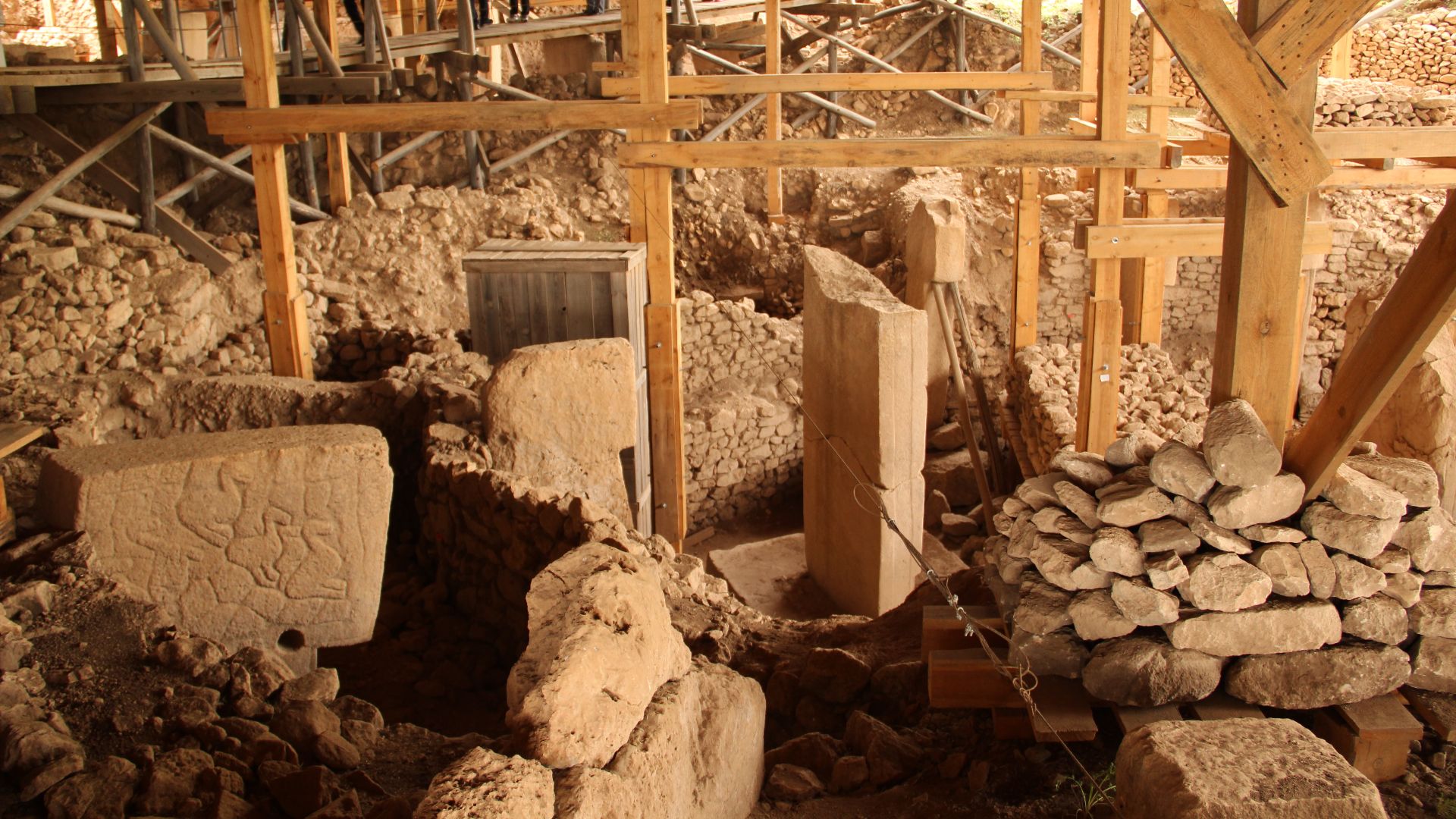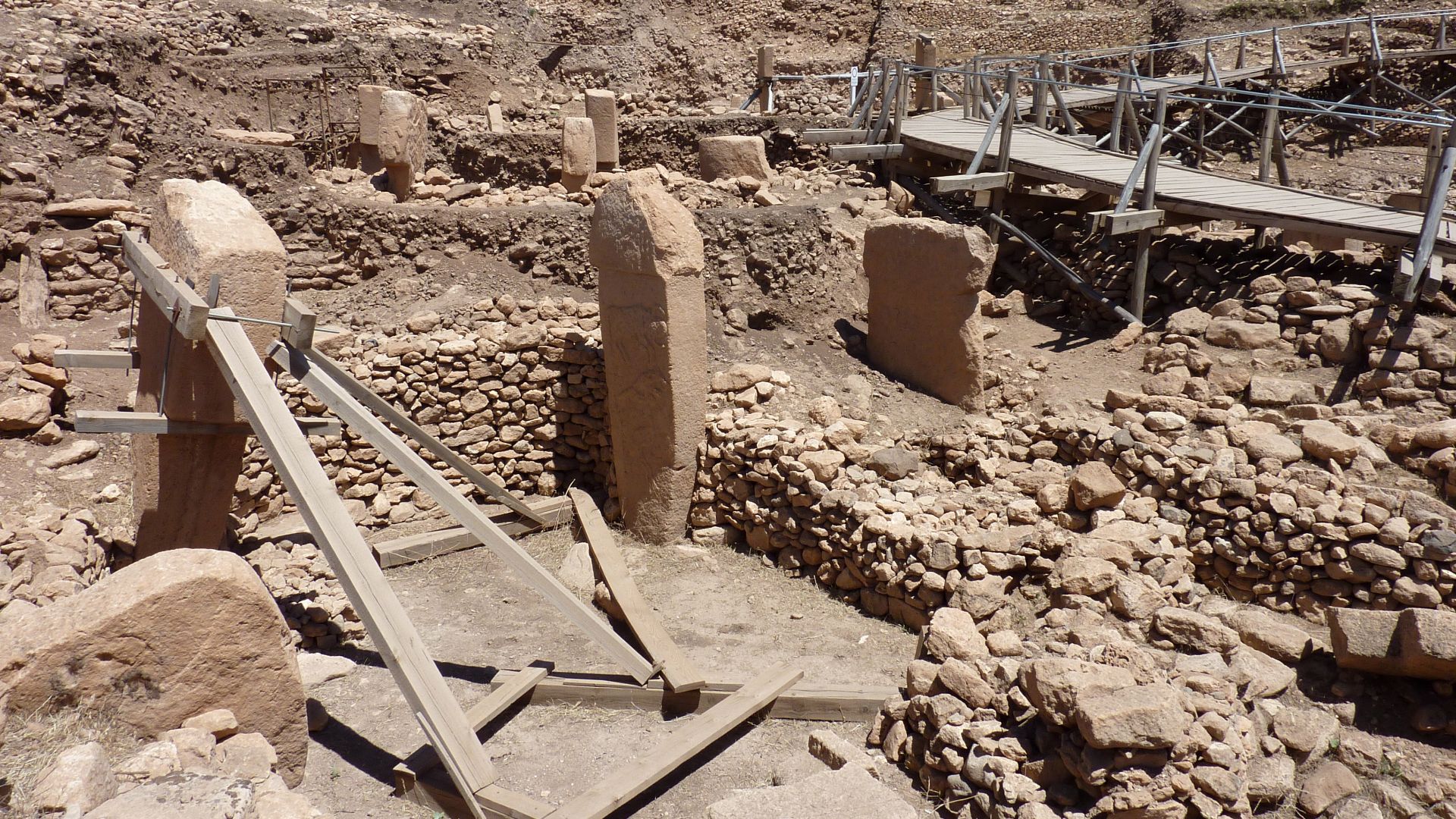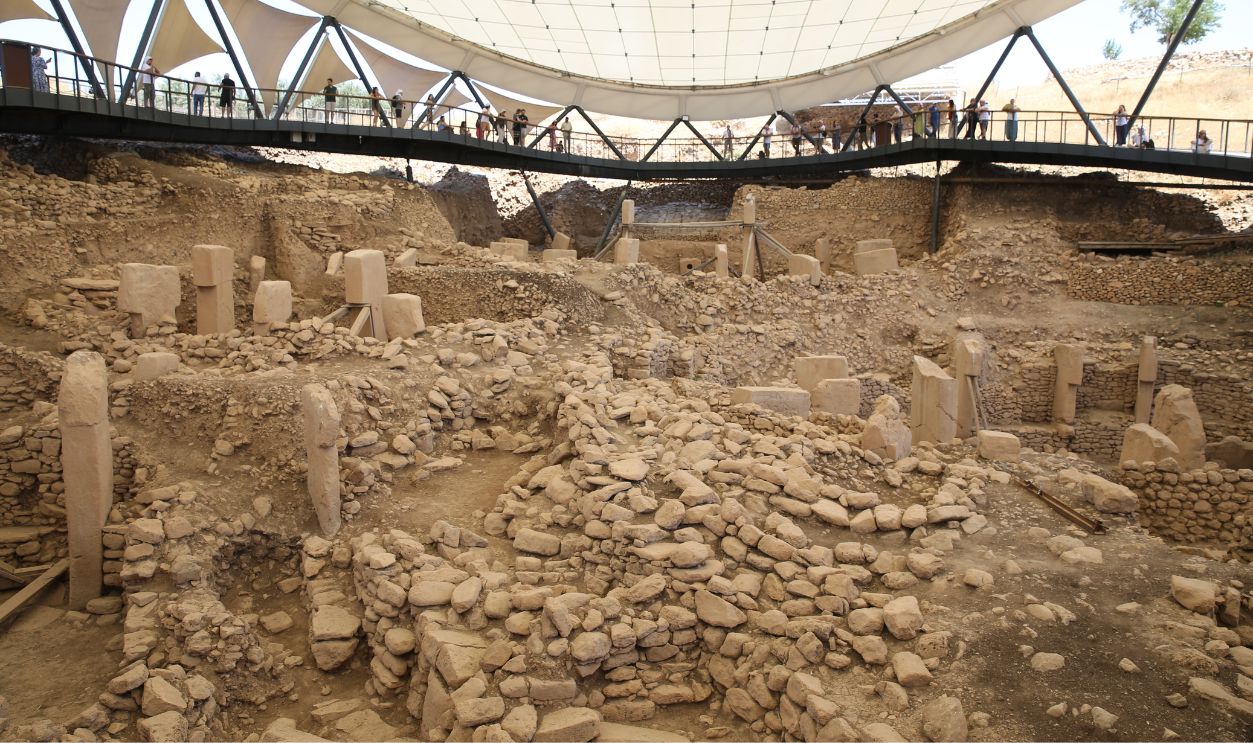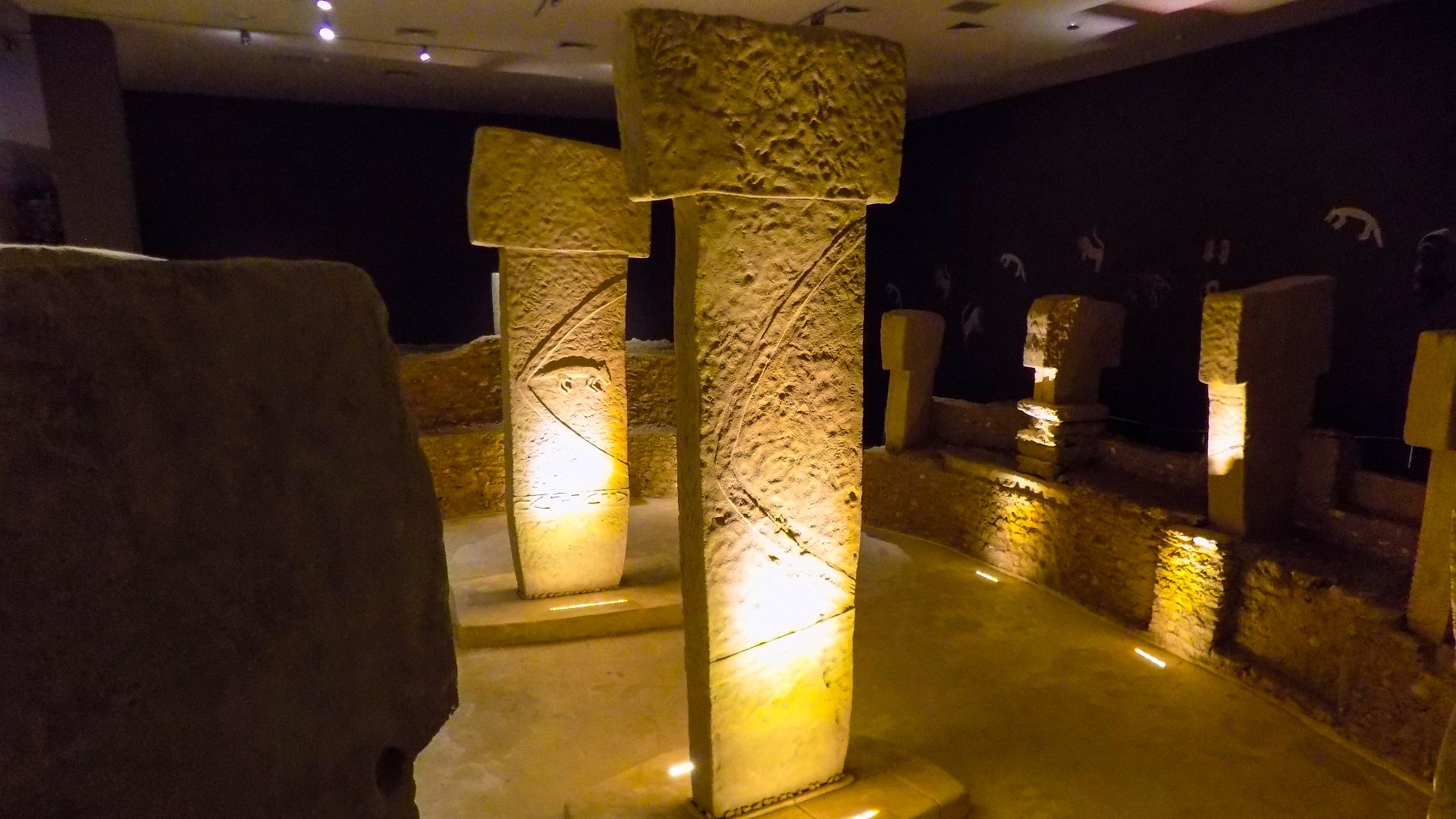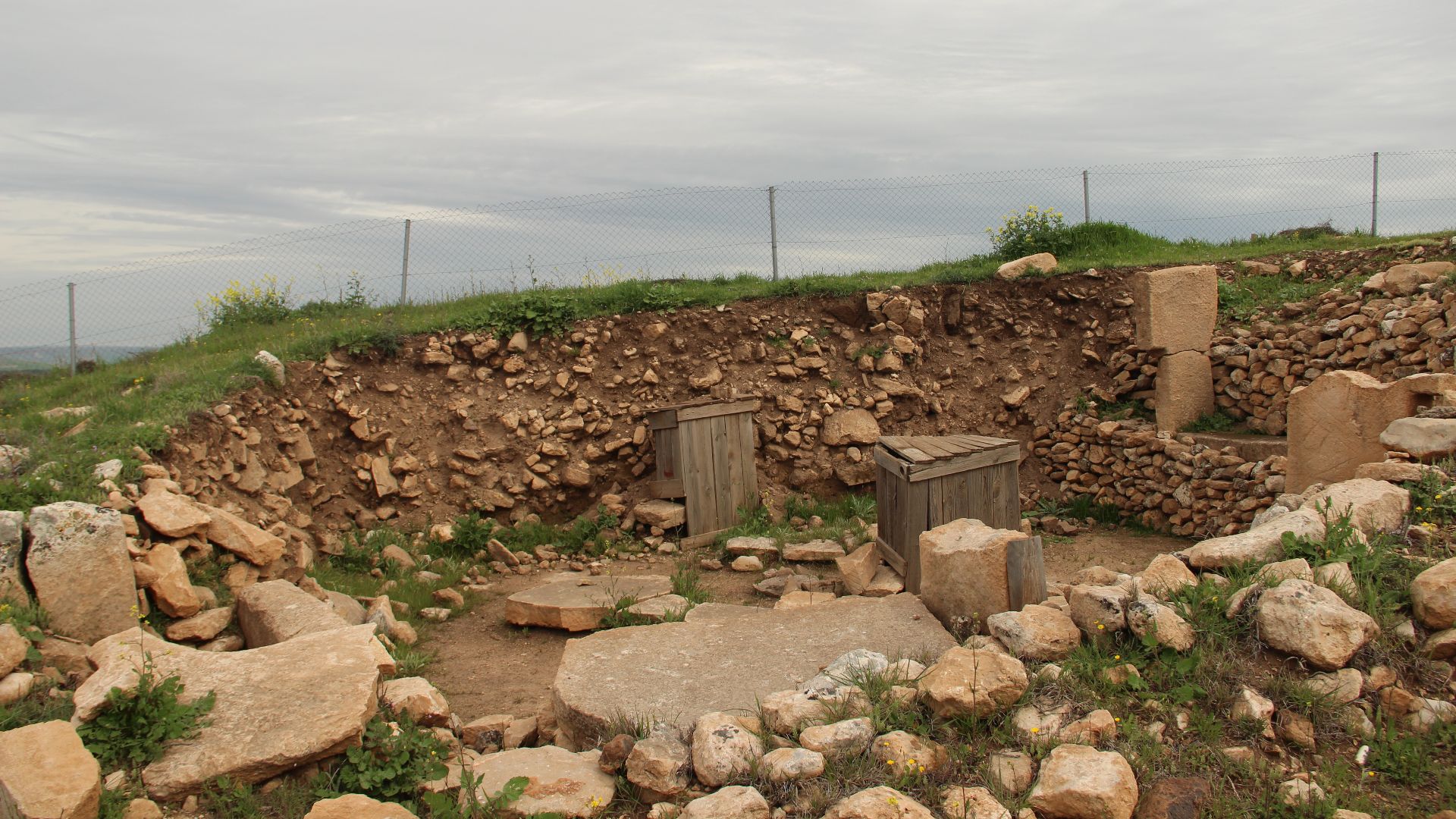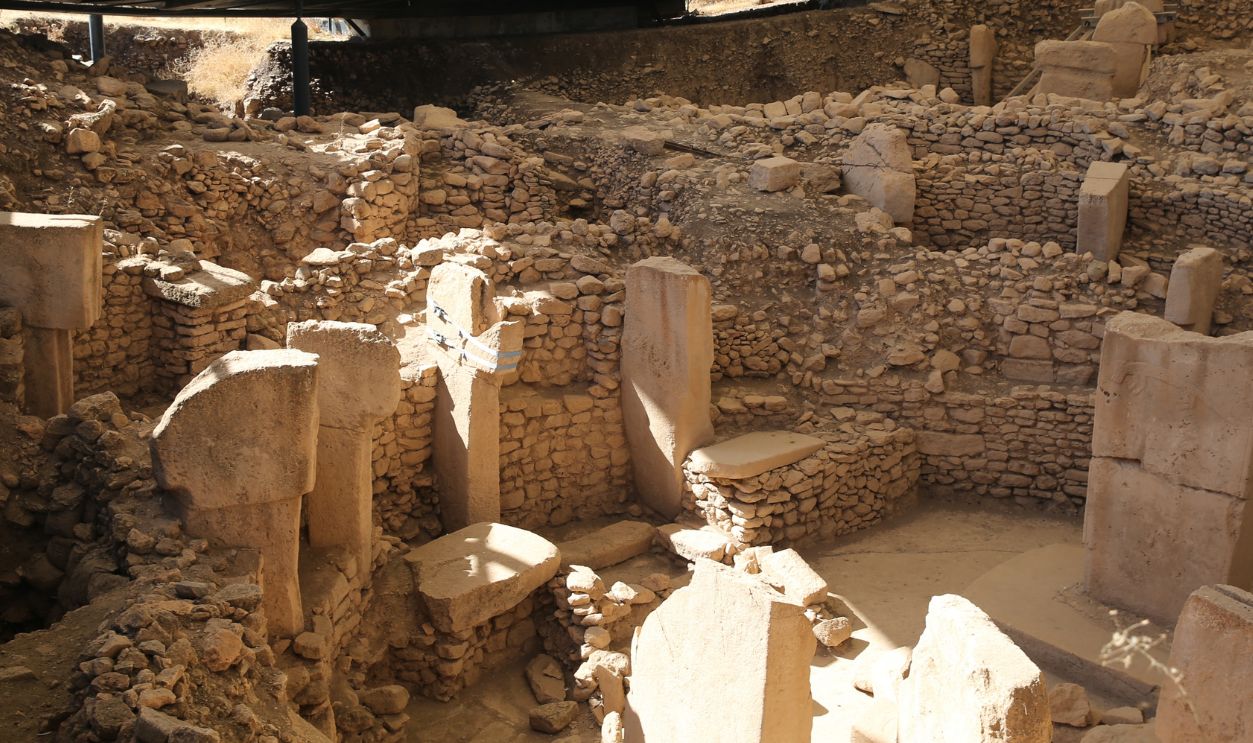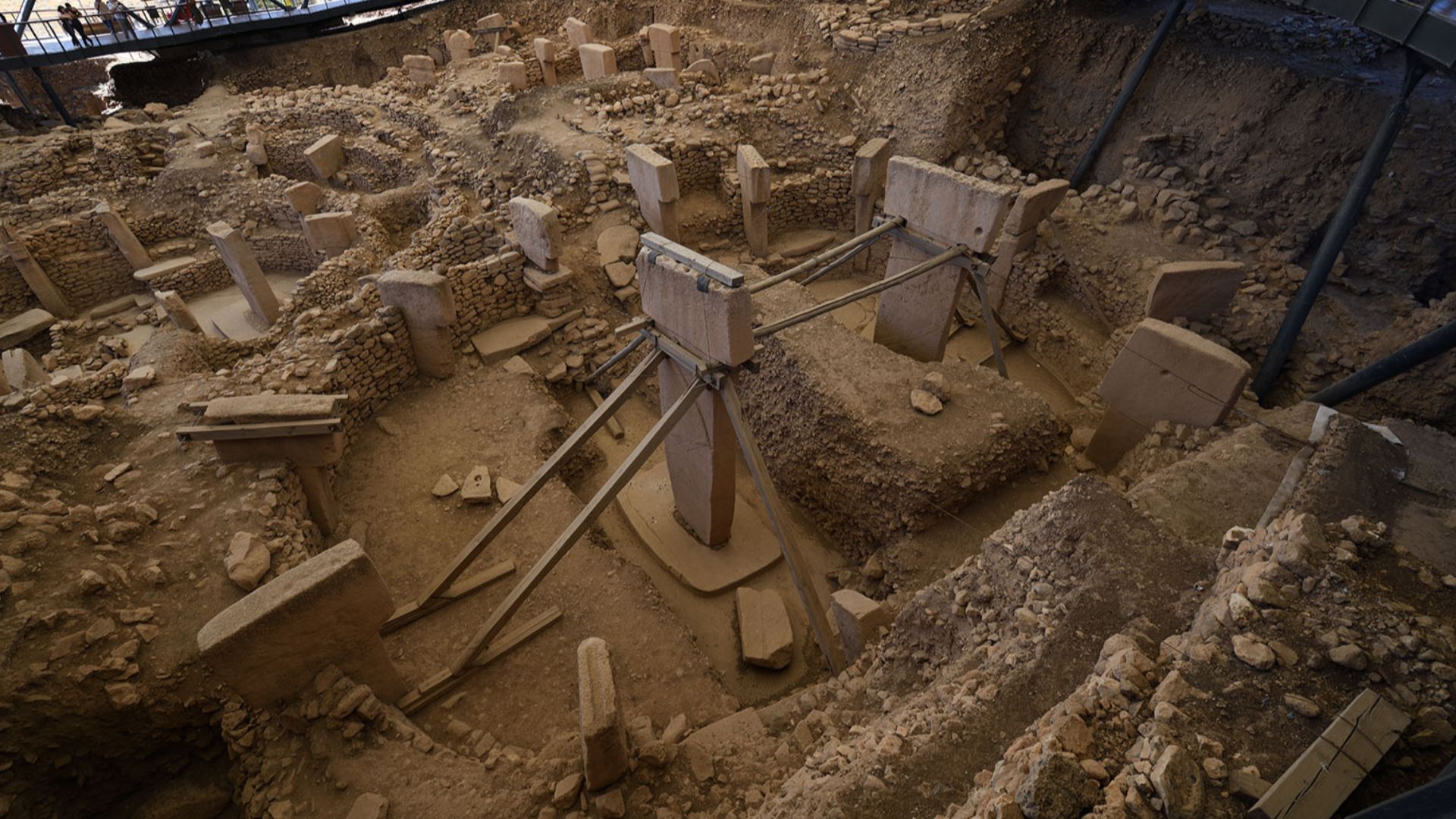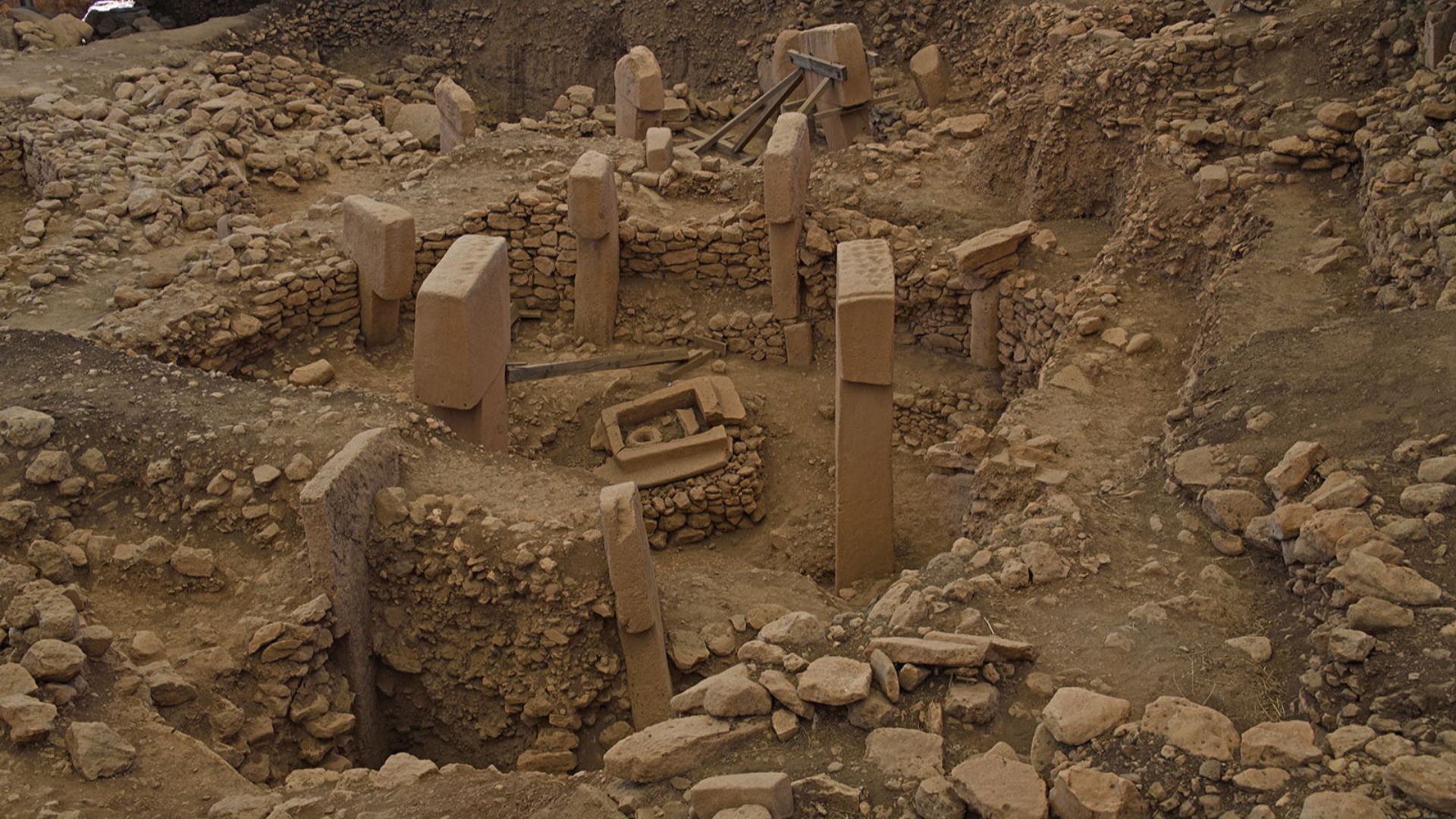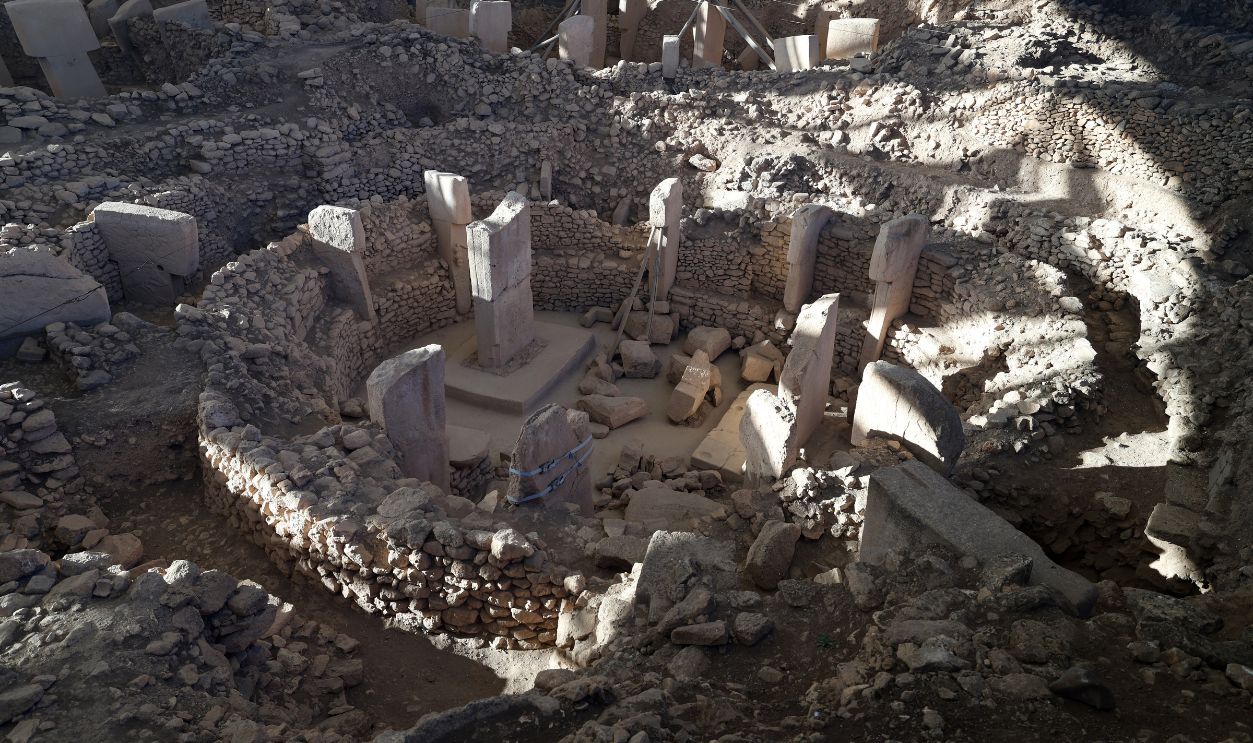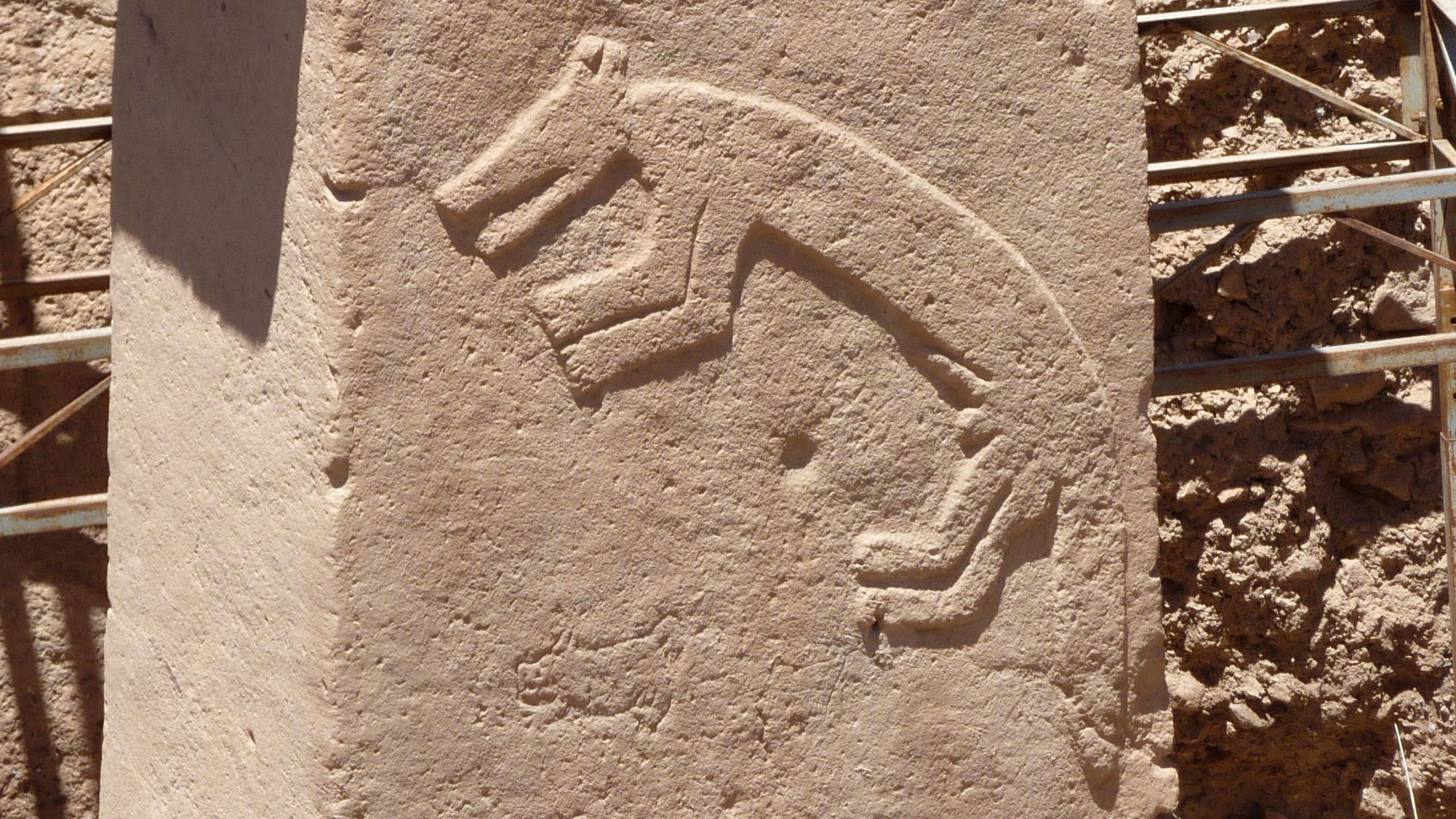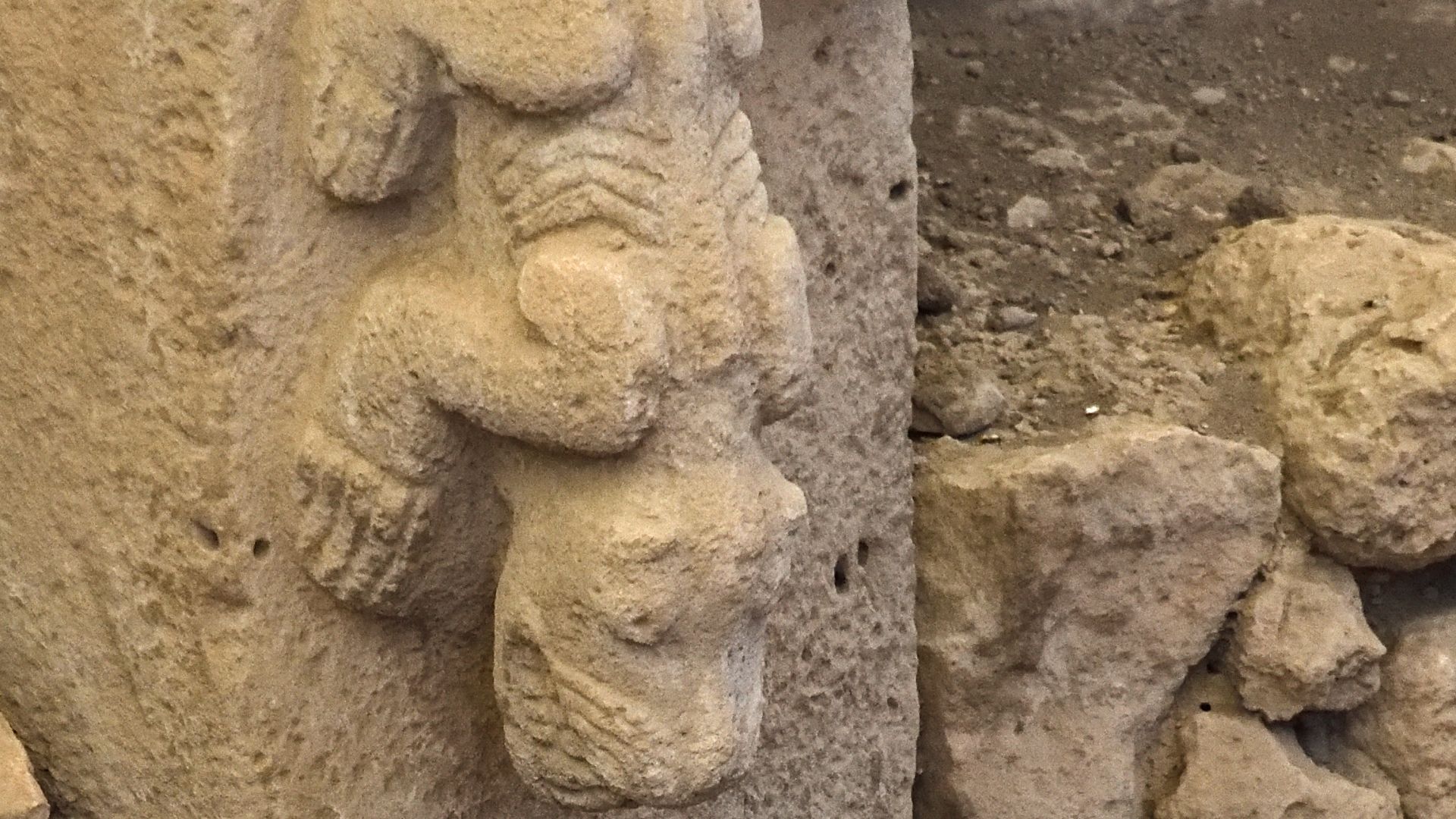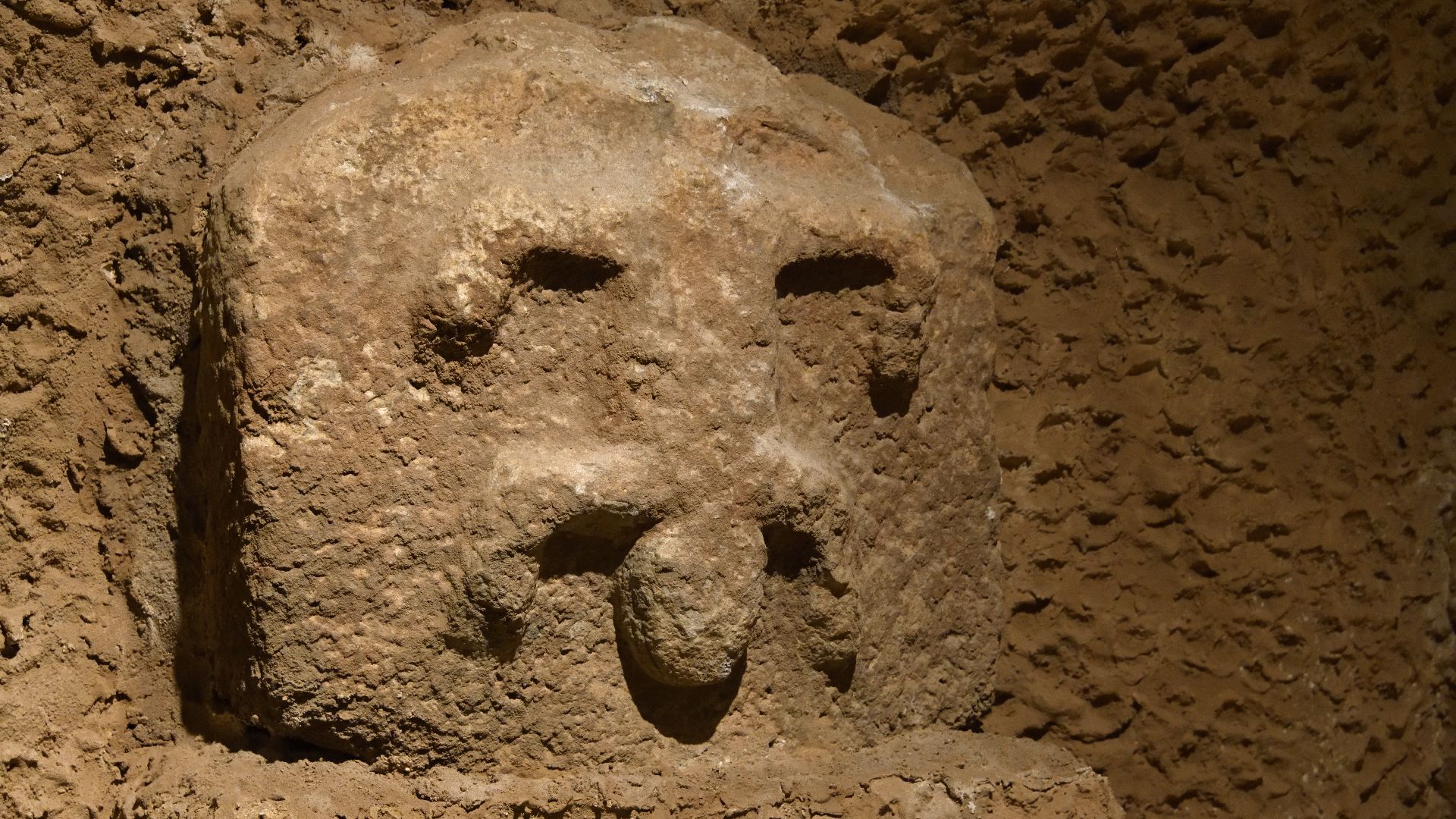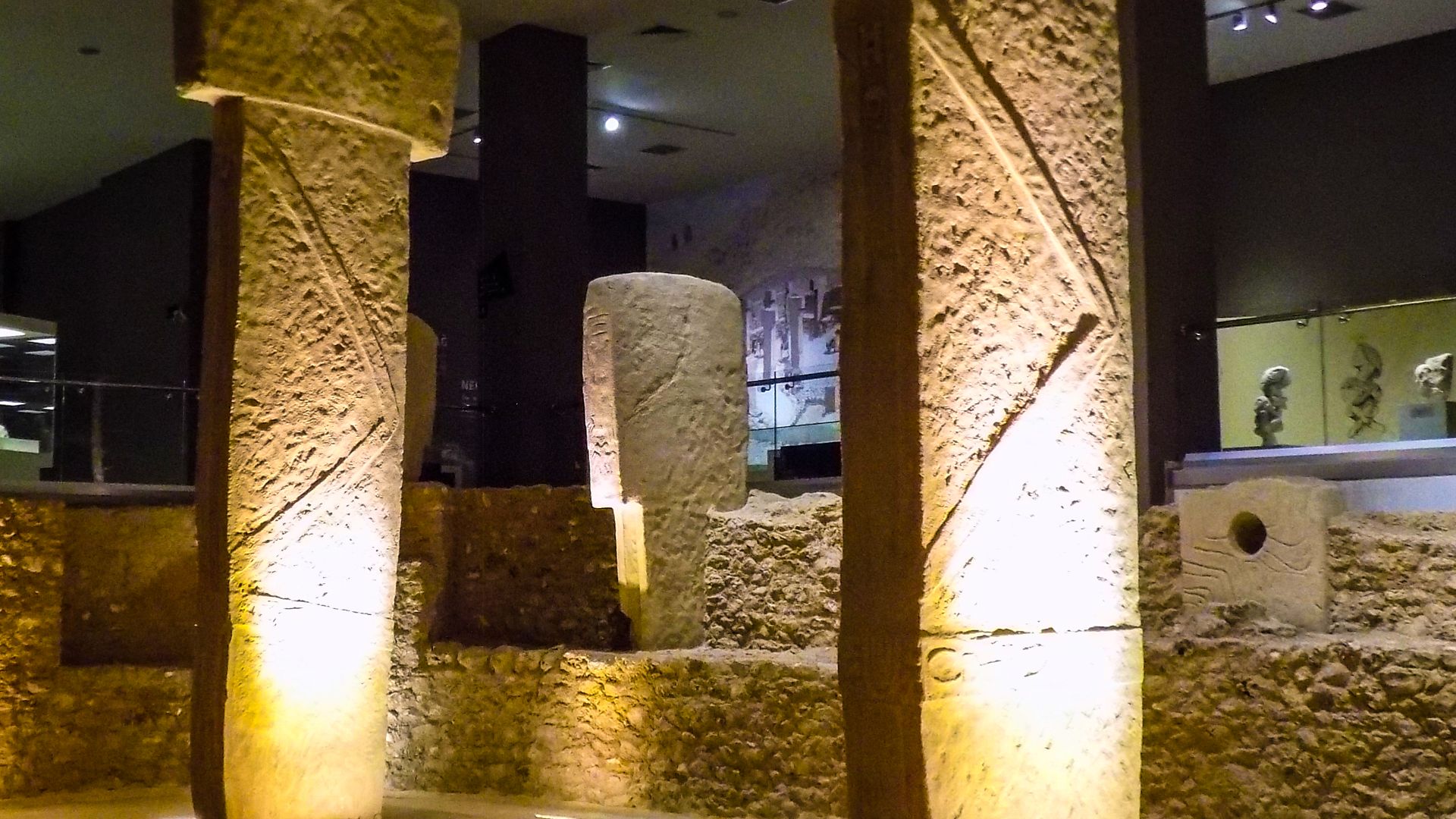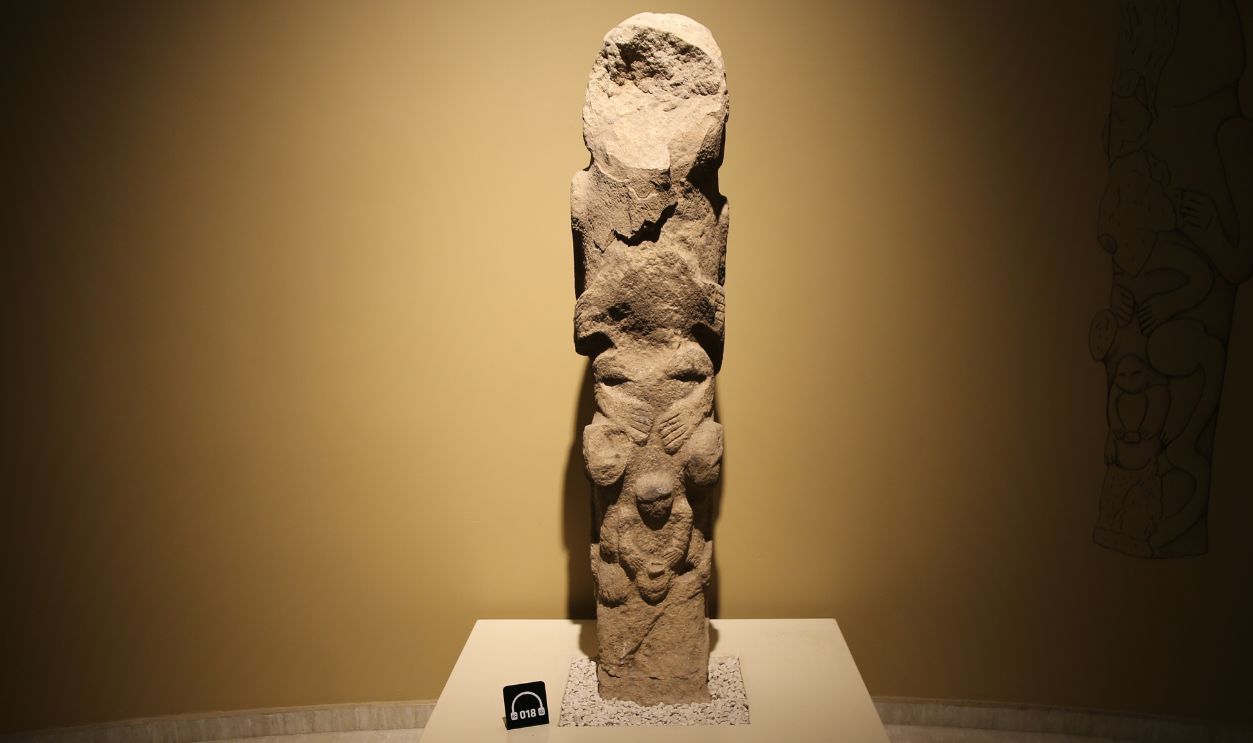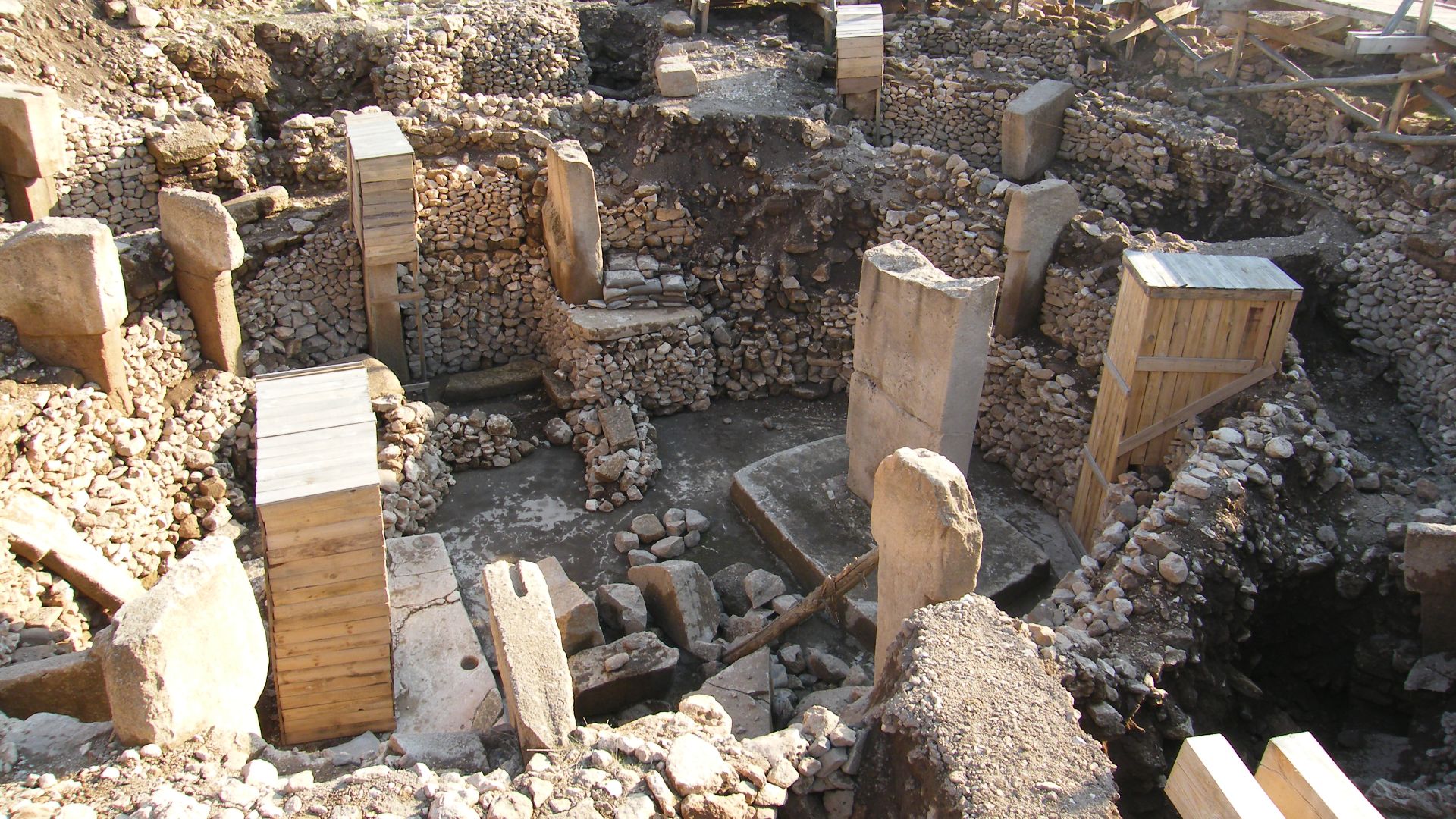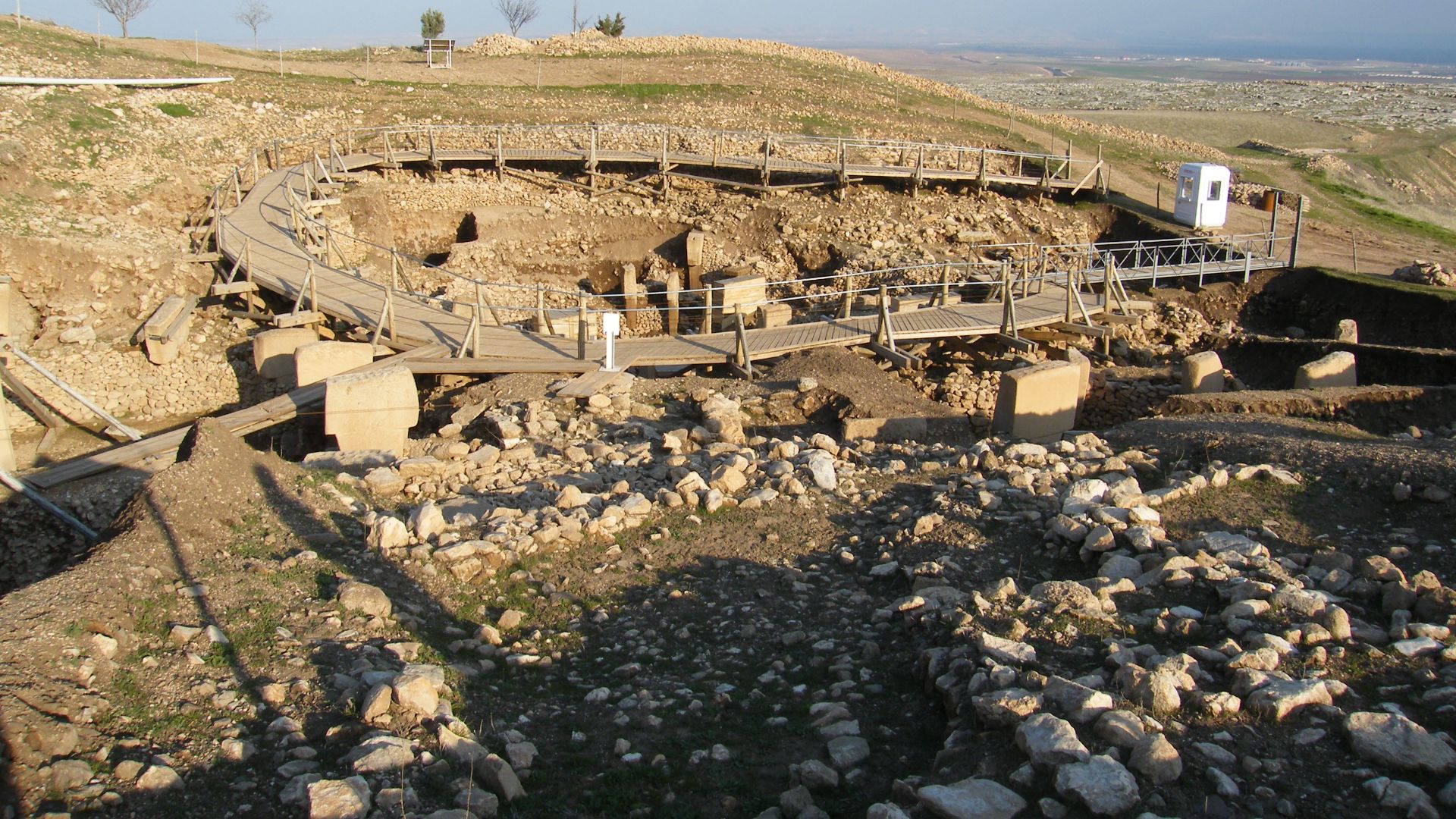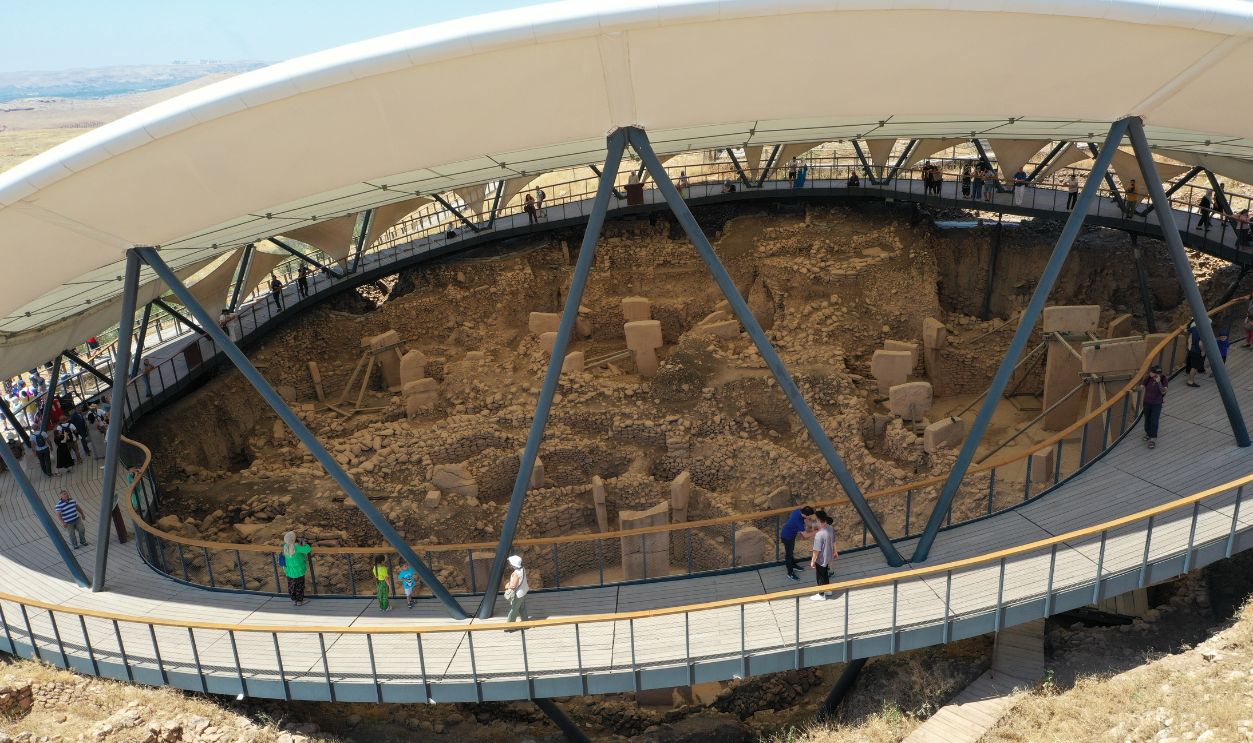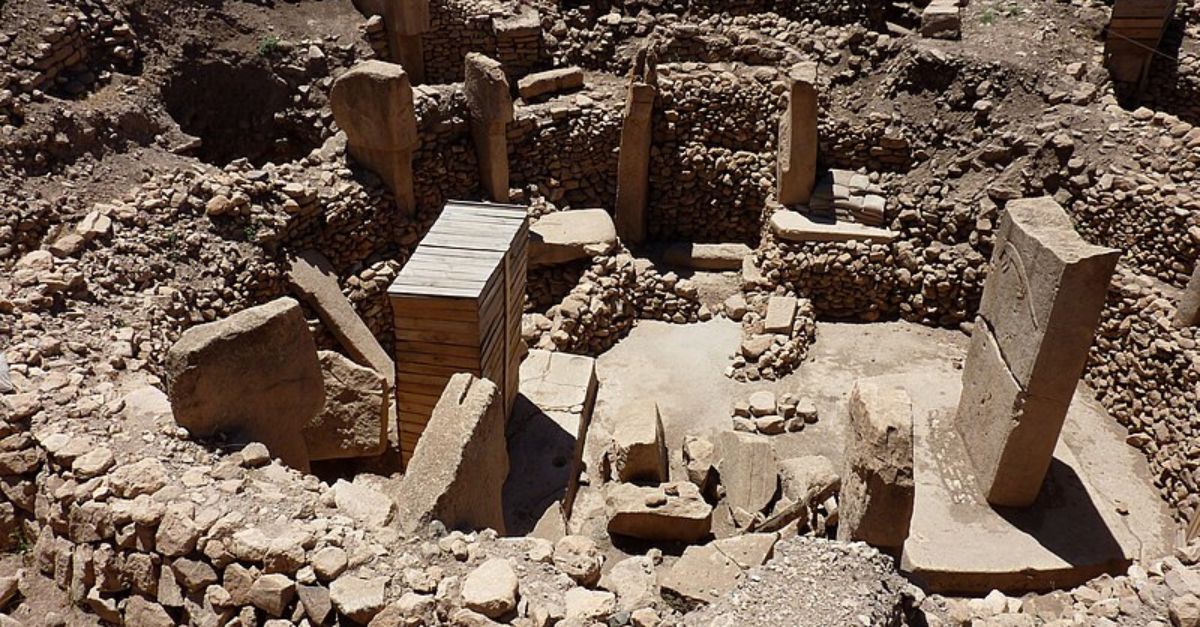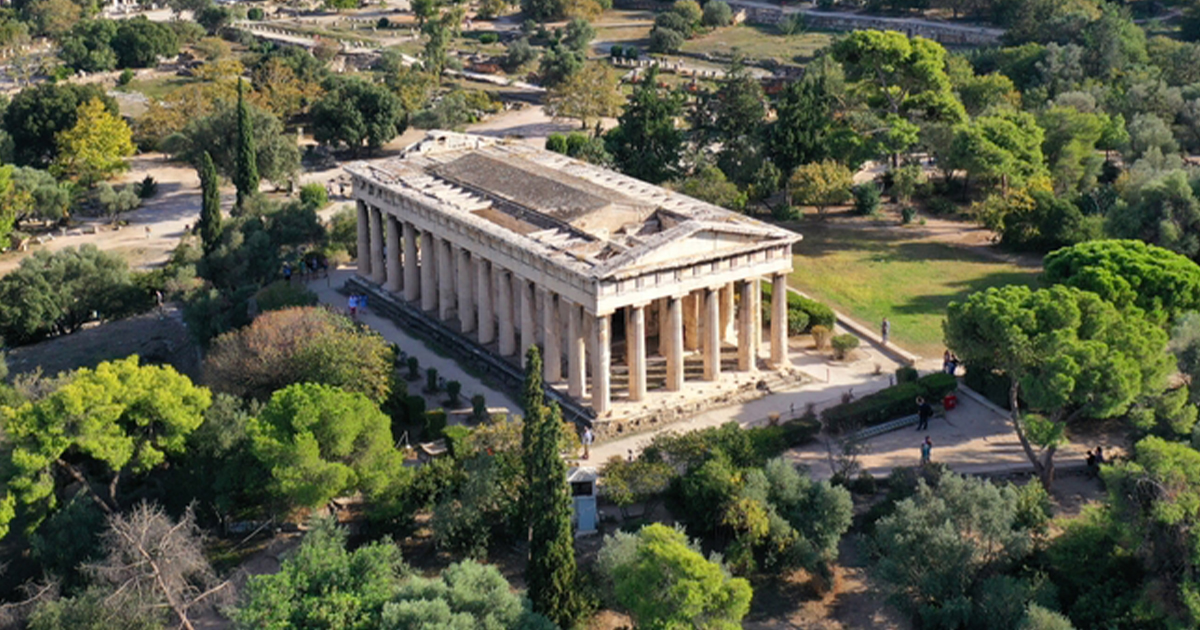Peeking Into The Ancient Past
Neolithic sites are incredibly important when it comes to discovering details about prehistoric human life. Luckily, many sites are still being examined, like Göbekli Tepe, which can grant us new insight into the past. What archeologists have uncovered is truly amazing.
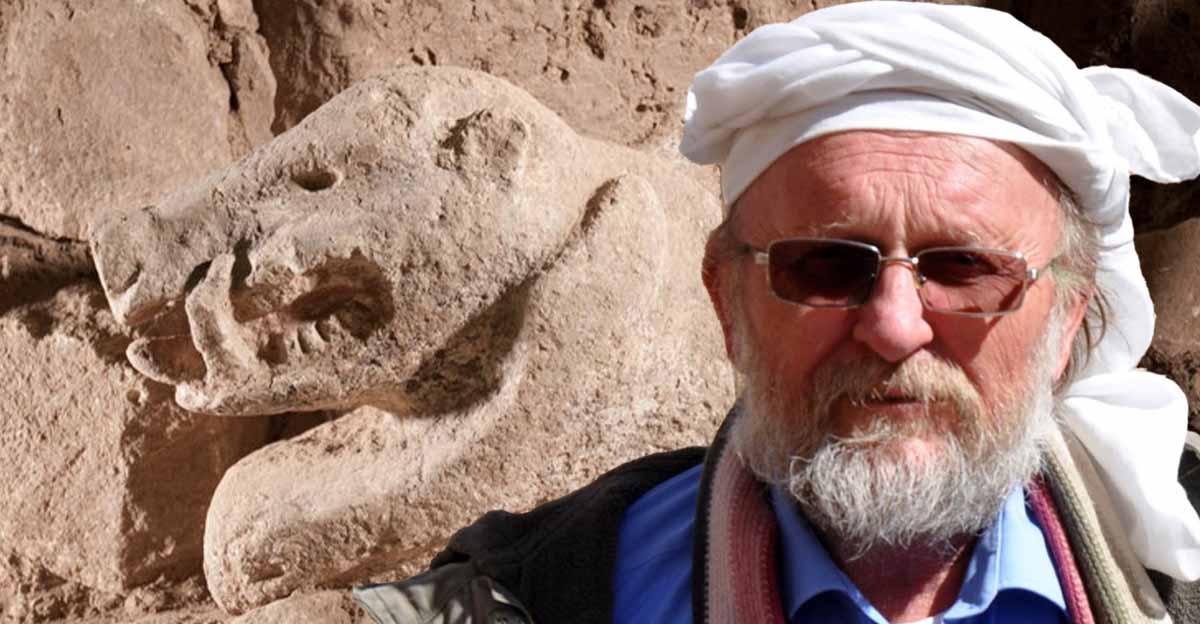
A Prime Location
Located in modern-day Urfa Province in Turkey, Göbekli Tepe is a Neolithic archeological site in what was Upper Mesopotamia. The location of the site is atop a hill in what is today an arid landscape with few trees. In ancient times, the land would have looked very different.
Influencing The World Around Them
Göbekli Tepe sits on a “tell”, which is an artificial mound built on top of a limestone plateau, and it is surrounded by steep slopes on all sides. The settlement looks over the Harran plain and the Balikh River. But there were some important differences between when Göbekli Tepe was occupied compared to the modern state of the area.
Availability Of Resources
Historically, the area would have both been warmer and more humid. Thanks to the plains surrounding the settlement, it would have been easy to harvest cereal grains and graze herds of animals (though not domesticated at this point). The land would have been “like a paradise”. But there was one major drawback to living on a plain.
Lack Of Tall Trees
There was very little woodland in the area, which meant wood would have been scarce, save for some specific types of trees that could grow in that environment. Of the charcoal analyzed at the site, 90% of it came from pistachio and almond trees.
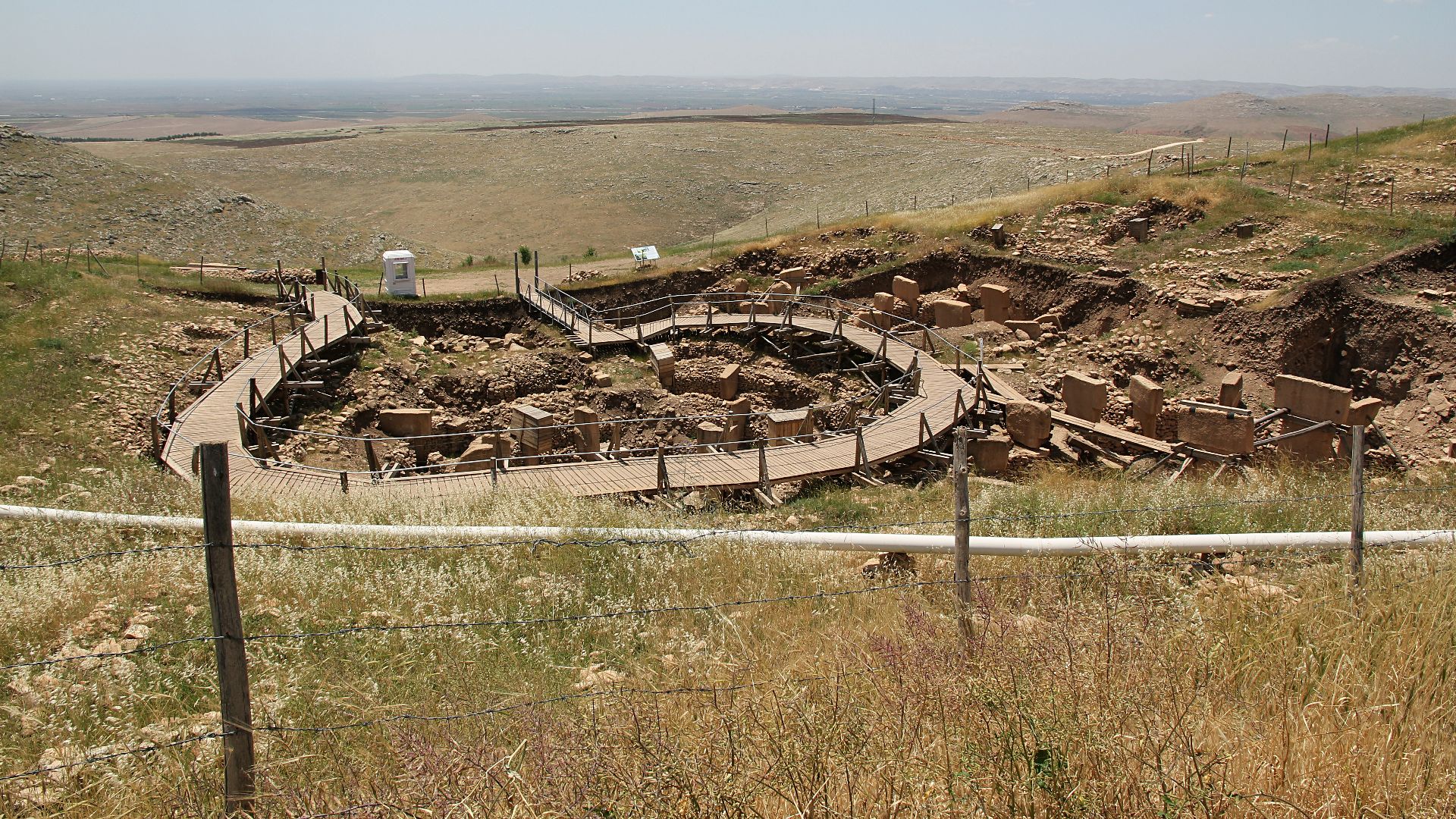 Klaus-Peter Simon, Wikimedia Commons
Klaus-Peter Simon, Wikimedia Commons
A Recent Discovery
Göbekli Tepe was discovered in 1963. Halet Çambel, from Istanbul University, and Robert John Braidwood of the University of Chicago conducted an archeological survey of the area. One of the archeologists on the excursion found stone and flint tools in the area which indicated something bigger laid beneath the surface.
 Gargarapalvin, Wikimedia Commons
Gargarapalvin, Wikimedia Commons
Clues To Something Larger
The upper parts of the site—T-shaped pillars—were visible at the time and had endured some damage over years of human inhabitation. The archeologists believed the visible parts of the stone were grave markers, though. Excavations began two decades later.
Fortunate Timing For A Discovery
In October 1994, Klaus Schmidt, an archeologist who was searching for similar sites, decided to reexamine the area. He asked nearby villages about hills that contained flint, and he met a man named Mahmut Yıldız, who guided him to the site.
The Stones Revealed More
It turns out, Yıldız’s family owned the land where the site was. It had previously been used as farmland, but when Schmidt saw the stones protruding from the earth, he knew he was onto something. He saw the potential for the site to be something amazing.
Excavations Began In Earnest
The next year, he started excavating the area. It didn’t take long to uncover the first of several huge T-shaped pillars. Yıldız wound up working on the excavations alongside the archeologists and guarded the site. For 20 years, Schmidt worked to unearth the secrets under the earth.
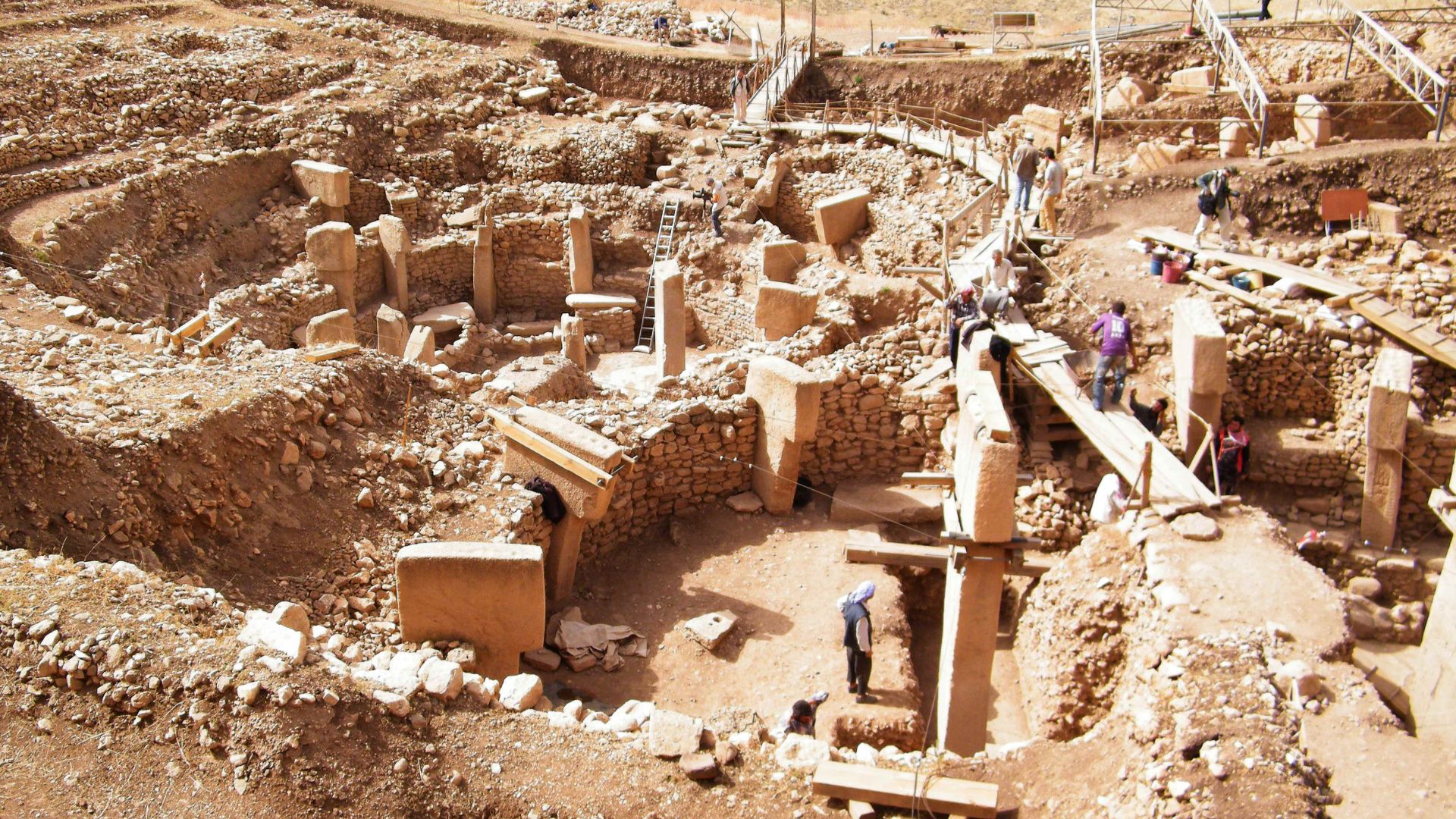 Volker Höhfeld, Wikimedia Commons
Volker Höhfeld, Wikimedia Commons
A Team Endeavor
When Schmidt passed on in 2014, the site eventually became a joint endeavor by Istanbul University, the Şanlıurfa Museum, and the German Archaeological Institute (DAI). As of 2021, there have been very limited excavations of the area as researchers focus on documenting what they’ve already uncovered.
 user:Danbury, Wikimedia Commons
user:Danbury, Wikimedia Commons
Incredibly Ancient Ruins
Figuring out when this site was constructed was important. In 1998, researchers used radiocarbon dating to find out. Using radiocarbon dating, they learned the structures that were initially exposed during excavation were constructed between 9600 and 8000 BCE. However, there were some issues with some of the samples.
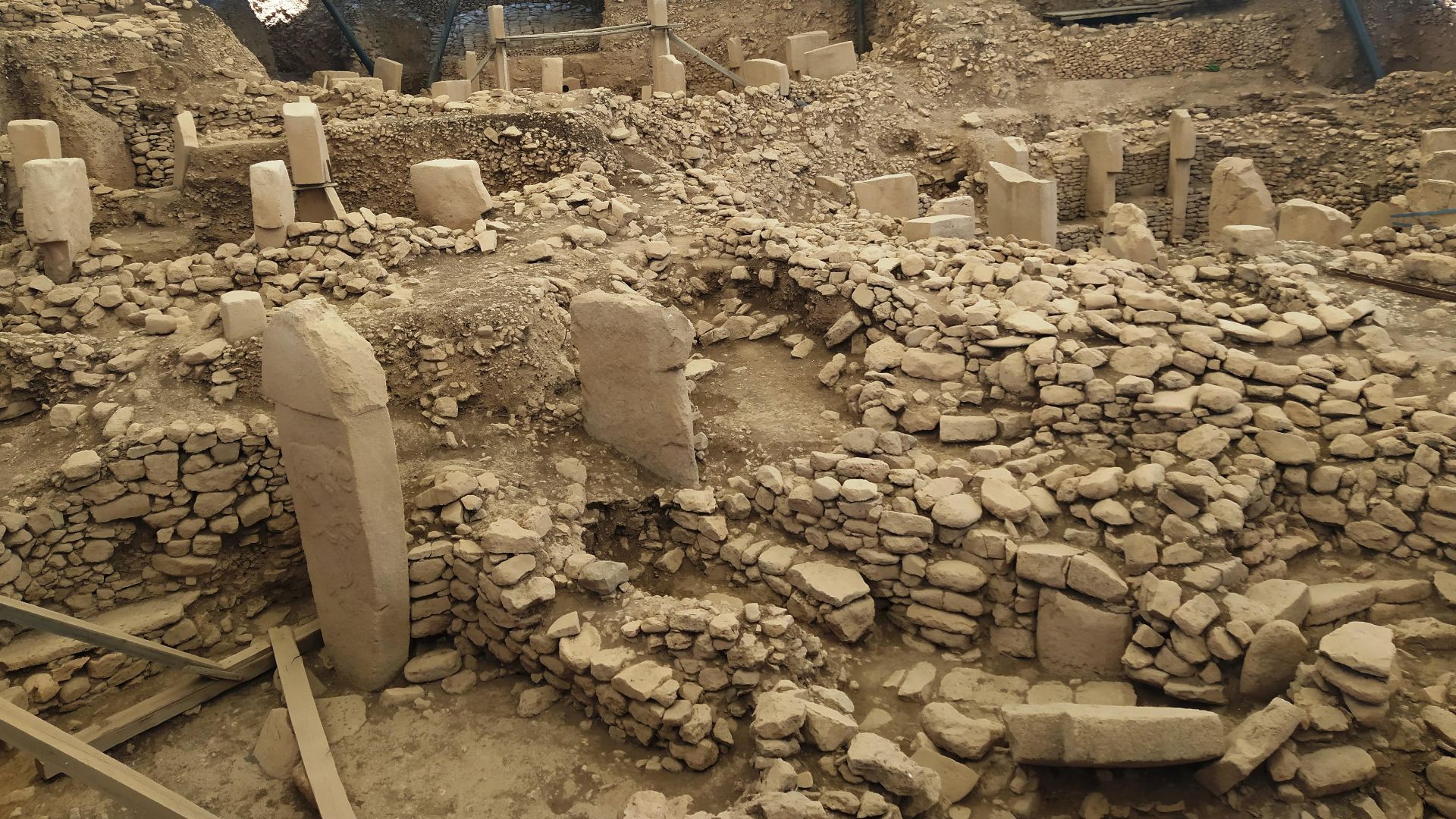 Radosław Botev, Wikimedia Commons
Radosław Botev, Wikimedia Commons
So Old, It Predates Pottery
The timeframe dated the site to what is called the Pre-Pottery Neolithic era. This means that domestication of both plants and animals was just starting to become more widespread. But the radiocarbon dating wasn’t a one-and-done test. They had to take multiple samples and make several attempts to date the site.
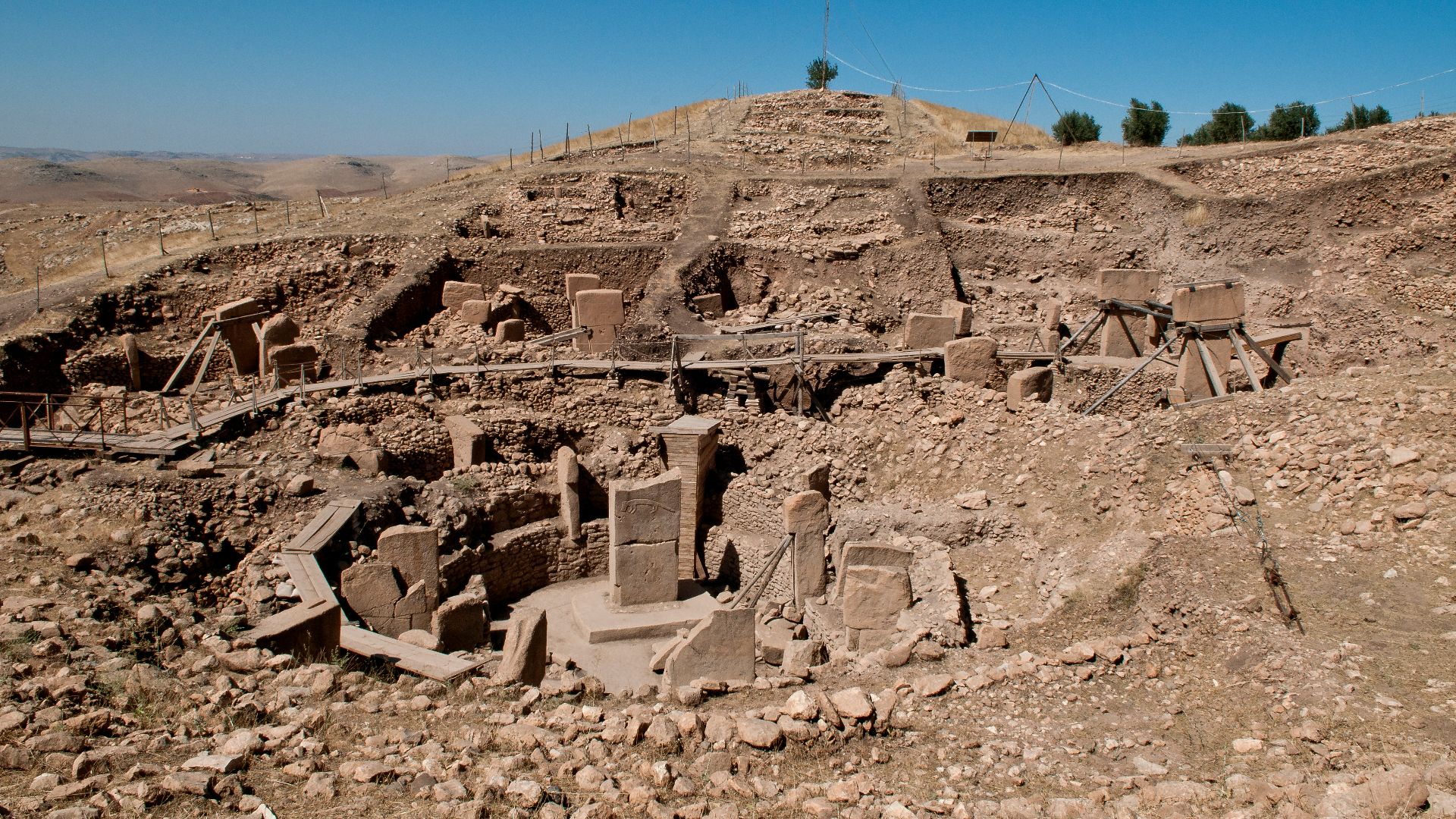 Teomancimit, Wikimedia Commons
Teomancimit, Wikimedia Commons
Inconsistencies And Tech Issues
The archeological team ran into some discrepancies with the site, as some of the materials had been transported during construction. This meant that the samples taken from those parts of the site couldn’t speak to the overall complex. They had to take a different approach to answering their question.
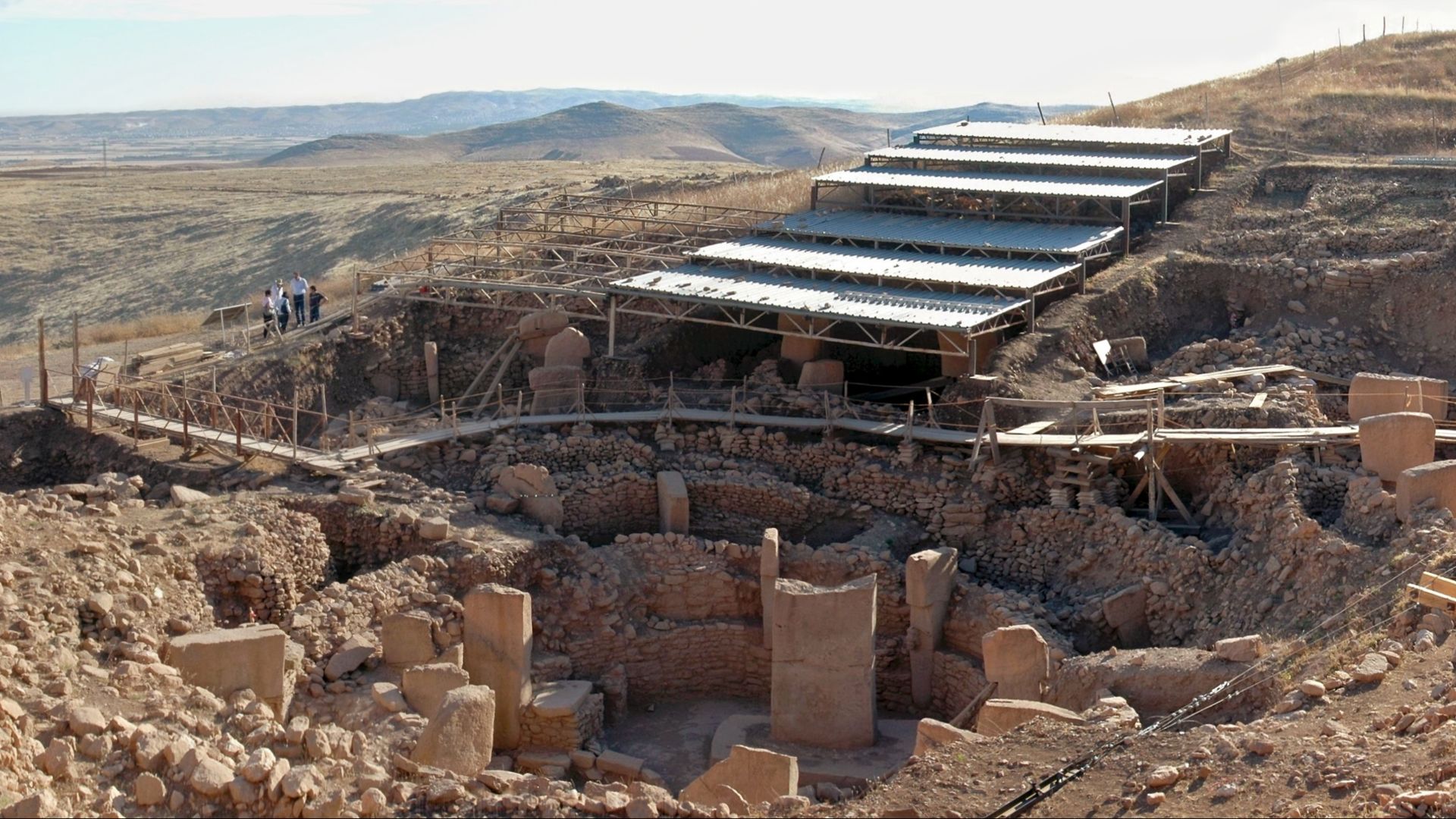 Creator:Rolfcosar, Wikimedia Commons
Creator:Rolfcosar, Wikimedia Commons
Changing Their Approach
They decided to take samples from the organic material preserved in the plaster embedded into the walls of the structure. The method was novel at the time, but it brought some very consistent dating to the Pre-Pottery Neolithic period. This did mean something dramatic for Schmidt’s research.
New Information Altered Existing Theories
He and his team had to drastically change their original chronology for the site. The revisions included removing a couple of his theories about how the construction of the site went. He also acknowledged that the dates based on the plaster at the site were influenced by the “old wood effect”.
Finding The Flaws In Their Techniques
The “old wood effect” is one of the places radiocarbon dating can run into issues. It involved a sample that gives confusing results when substances of different ages are found in the same context. But thankfully, Schmidt and his team were able to tease out an answer to their inquiry.
Uncovering The Secrets Of The Site
With the period of the site established, they could start examining the other parts of the site with the appropriate chronological context. They estimated that the site went through eight different phases of construction. The building and occupation of the structures spanned “at least” 1,500 years.
Discovery Of The Main Areas
In Phase 1, archeologists established that the first versions of the original four structures were built in the late 10th millennium BCE. These were called enclosures, and labeled A, B, C, and D, with other “rooms” being discovered later. Each of them has their majesty, and the scale of the enclosures is huge.
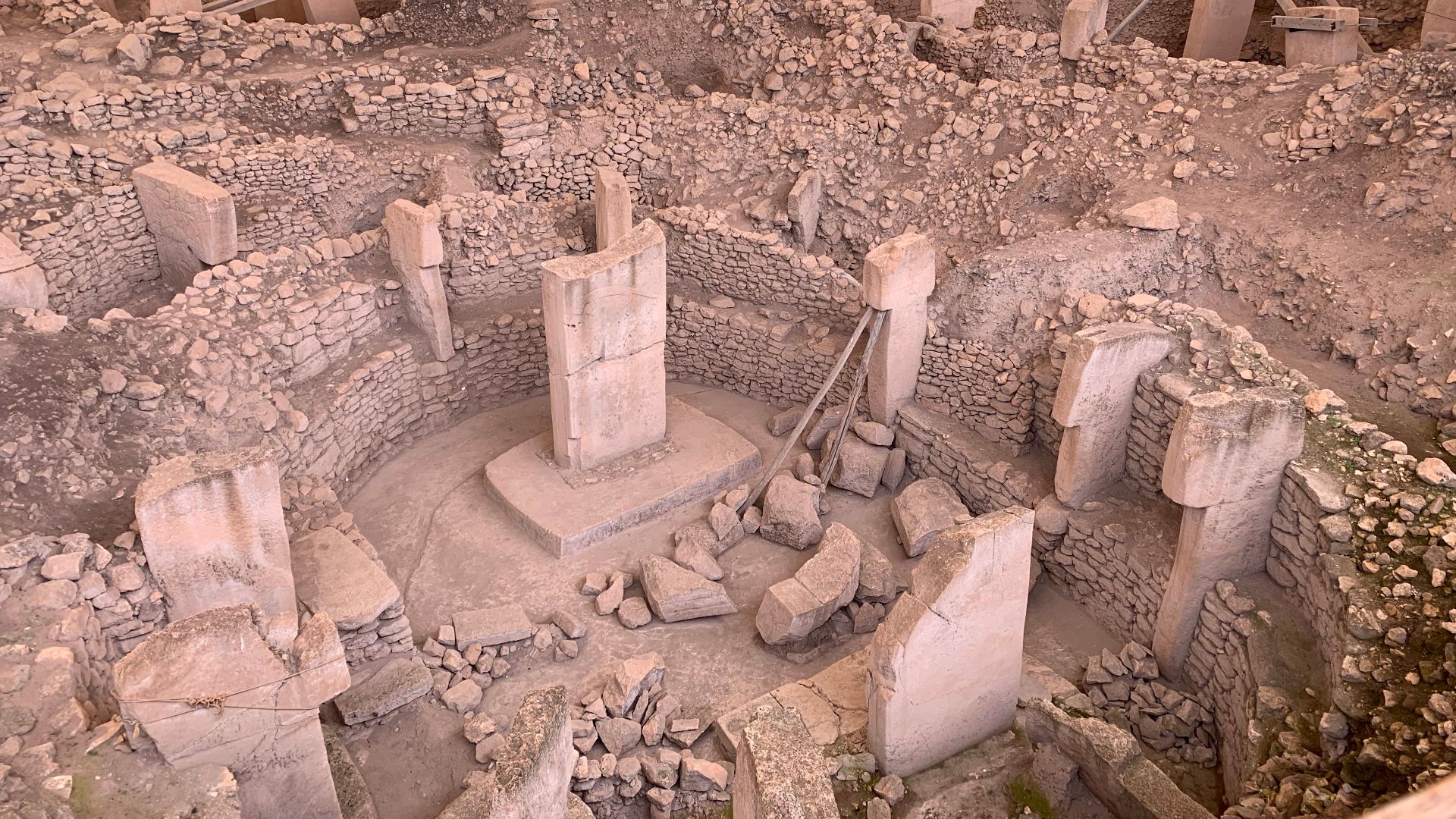 Beytullah eles, Wikimedia Commons
Beytullah eles, Wikimedia Commons
Adding And Changing
Phase 2 of the complex’s construction consisted of modifications to the existing structures. This included adding new walls and the immense T-shaped pillars. These immense pillars might have looked odd if the enclosures around them weren’t equally as impressive—more on that later.
Always Evolving
Phases 3-5 consisted of building more domestic structures. They were completed and added to at different points, including adding benches and the now iconic pillars, adding new walls, and modifying and repairing what was already in the space. But there was one problem with all the construction.
They Were Faced With Disaster
There was a “slope slide” which led to sediment and rubble flooding downhill into what is known as enclosure D. This severely damaged the site, and the inhabitants had to adapt to their new situation.
Adapting To Climate Catastrophe
They added some stabilizing features in Phase 5 and even added a terrace wall to protect against future slides. Unfortunately, they couldn’t stop nature from taking its toll on their construction. There was a second major slide.
Knowing Their Limits
It appears that the inhabitants didn’t want to reconstruct enclosure D for a second time. Instead, they abandoned the site in the 9th millennium BCE. Thankfully, they had many other spaces to occupy in their complex.
One Loss Was Another Gain
Phases 6 and 7 weren’t very busy times as far as construction goes. Enclosures B and D had both been abandoned, which meant the inhabitants expanded into a different part of the complex. Researchers believe this is when they built Building G and what they call the “Lion Pillar Building”.
Drawing To A Close
The final period of occupation was in Phase 8. As far as the construction went, there were relatively minimal additions. They built smaller habitational structures, but that was all they added on top of the existing structures. At that point, researchers considered the Neolithic village abandoned.
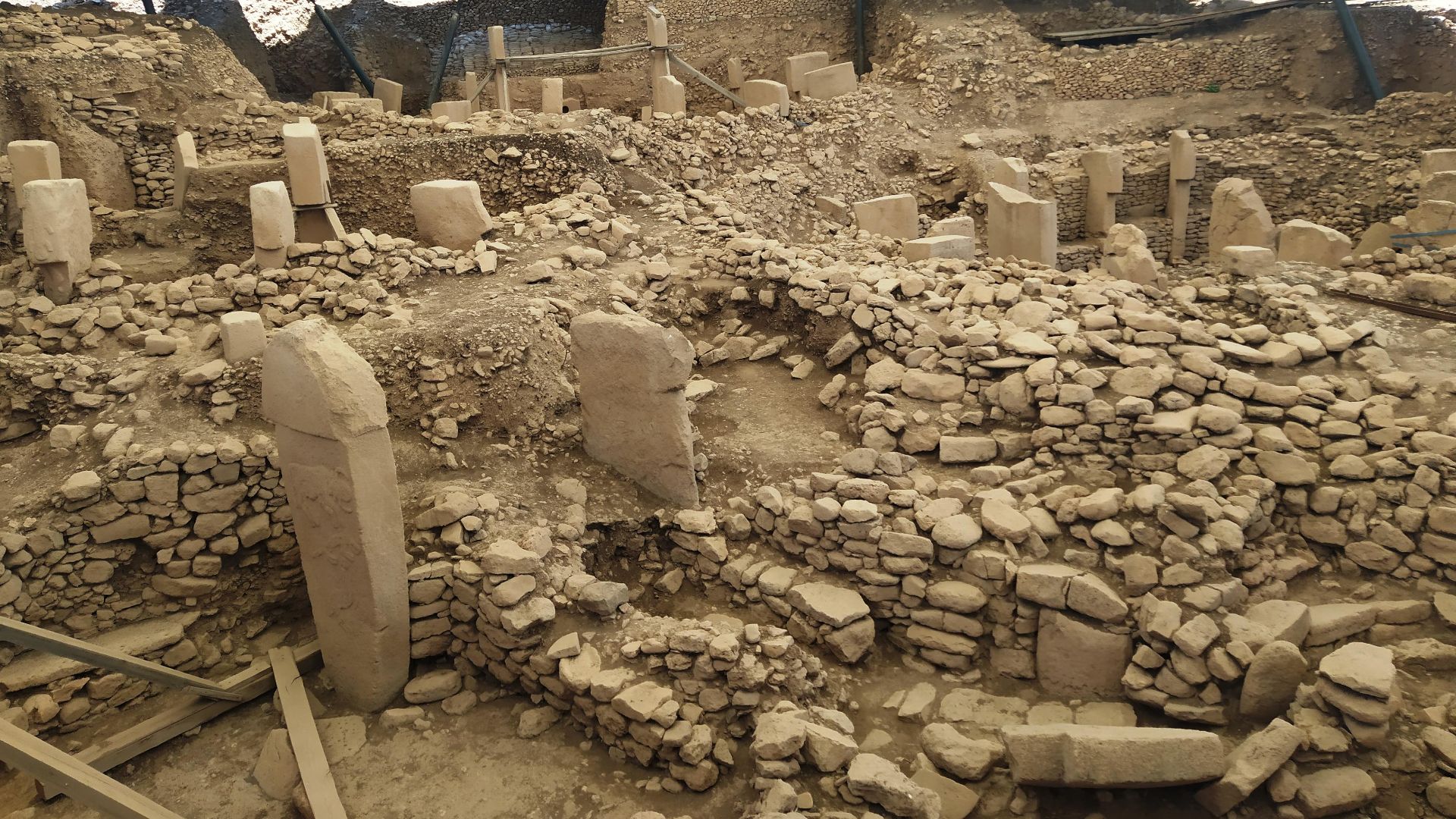 Radosław Botev, Wikimedia Commons
Radosław Botev, Wikimedia Commons
Impressive Size And Curious Shapes
These enclosures range between 10 to 30 meters in diameter and are surrounded by “domestic” structures which are round and oval. The four circular structures feature the T-shaped pillars, which hold some intriguing information for researchers.
Intent Behind Design
The pillars are made of limestone, and they’re set intentionally within the outer walls constructed of rough stone. The limestone was likely harvested with flint tools and transported from nearby bedrock pits, which are only 100 meters away from the site. There is even a partially quarried stone still embedded in the earth!
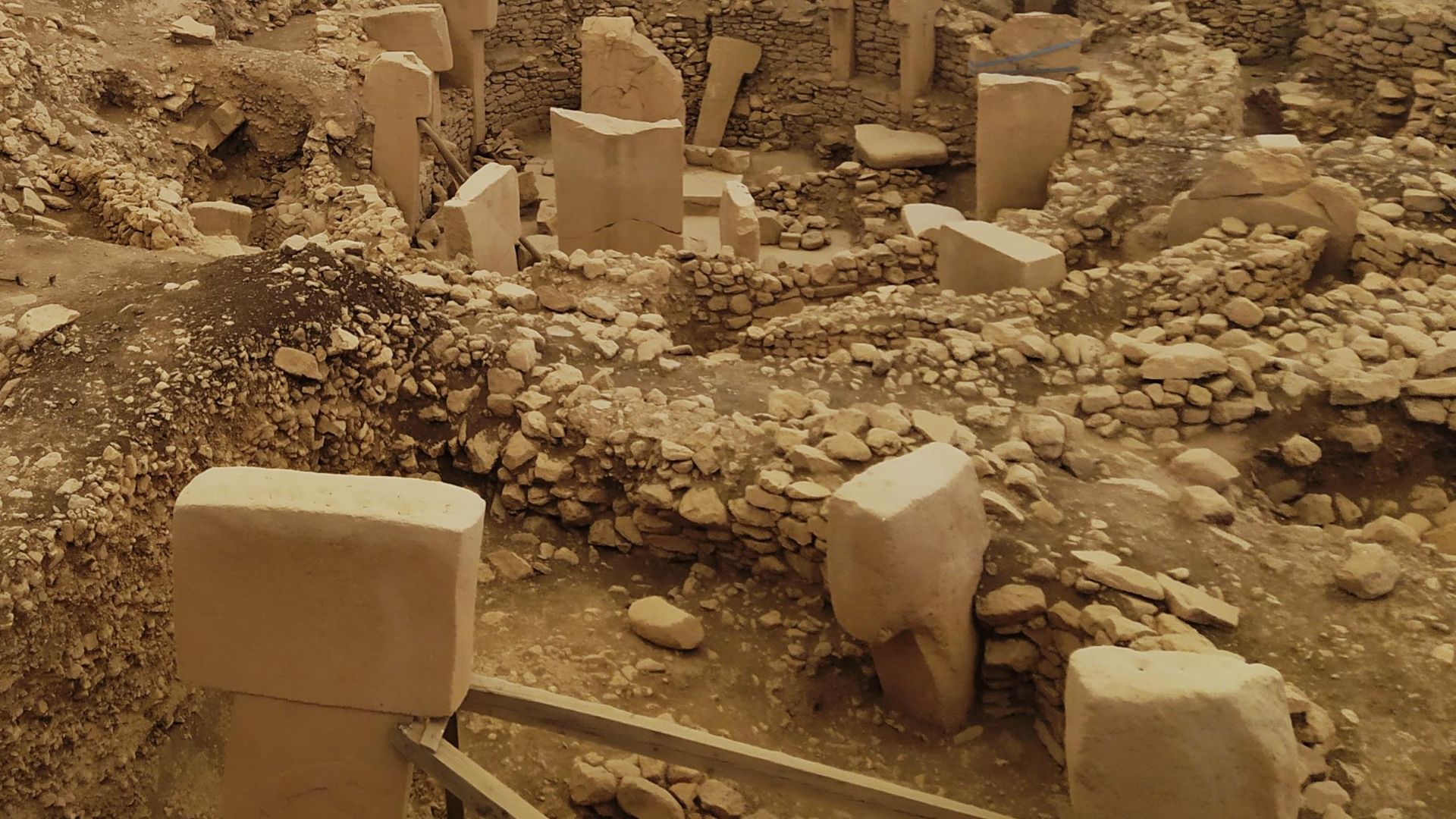 Radosław Botev, Wikimedia Commons
Radosław Botev, Wikimedia Commons
Including Comfort Objects
Aside from the limestone pillars, there are also some compelling features manufactured by ancient humans. Specifically, they carved stone benches, which they likely used to sit on when inside the structures. This taught archeologists something riveting about the early inhabitants.
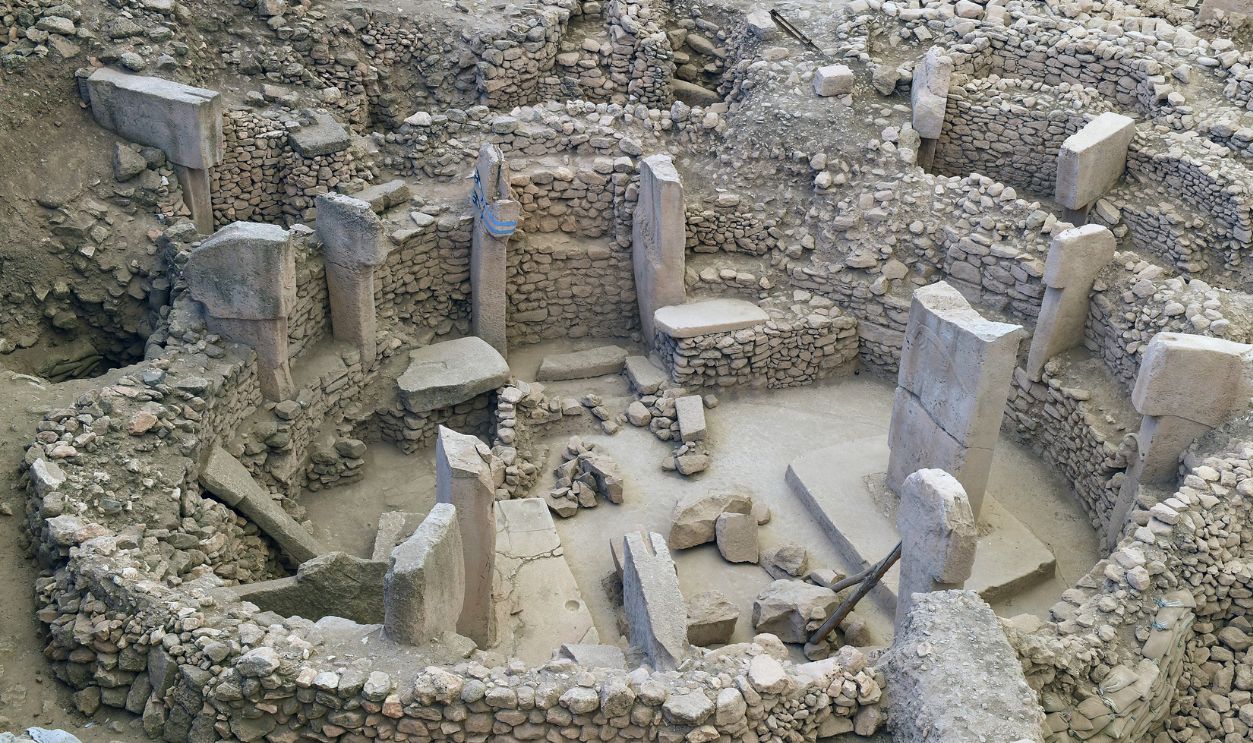 Xinhua News Agency, Getty Images
Xinhua News Agency, Getty Images
Sitting For Dinner
With the benches featured prominently within the enclosures, researchers believe the inhabitants of the area lived a semi-sedentary lifestyle. Combined with the number of animal bones found on the site, it’s clear this was “a hunter-gatherer site”, according to Schmidt. This same sort of lifestyle theme was carried through the different phases of construction.
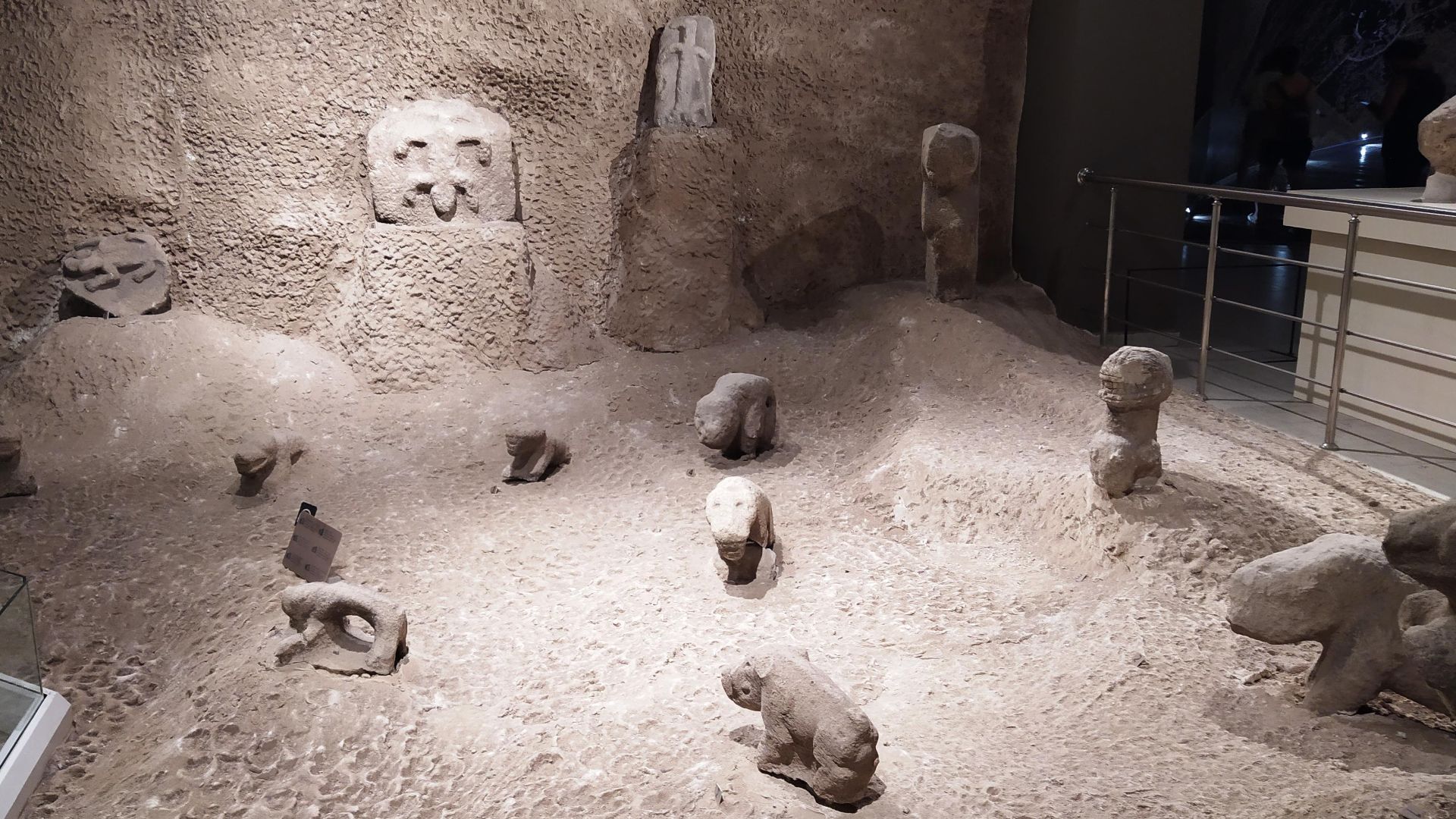 Radosław Botev, Wikimedia Commons
Radosław Botev, Wikimedia Commons
Evidence Of Artistic Endeavors
Many of the pillars, which have become a major component of the site, feature incredible engravings along the sides. They’re decorated artistically with “abstract, enigmatic pictograms” and carved with animals. Pictograms have specific implications in Neolithic contexts, which researchers have explored.
Drawing On Spiritual Practices
They can commonly represent sacred symbols, much like Neolithic cave paintings found elsewhere in the world. The ones at Göbekli Tepe feature donkeys, gazelles, lions, boars, and bulls. They even feature creatures we wouldn’t expect.
A Wide Array Of Creatures
Some of the reliefs feature snakes and reptiles, and others show insects and spiders. There are even birds, specifically, vultures on some of the pillars. Vultures are a shared iconography with other Neolithic sites like Jericho and Çatalhöyük. But that isn’t all.
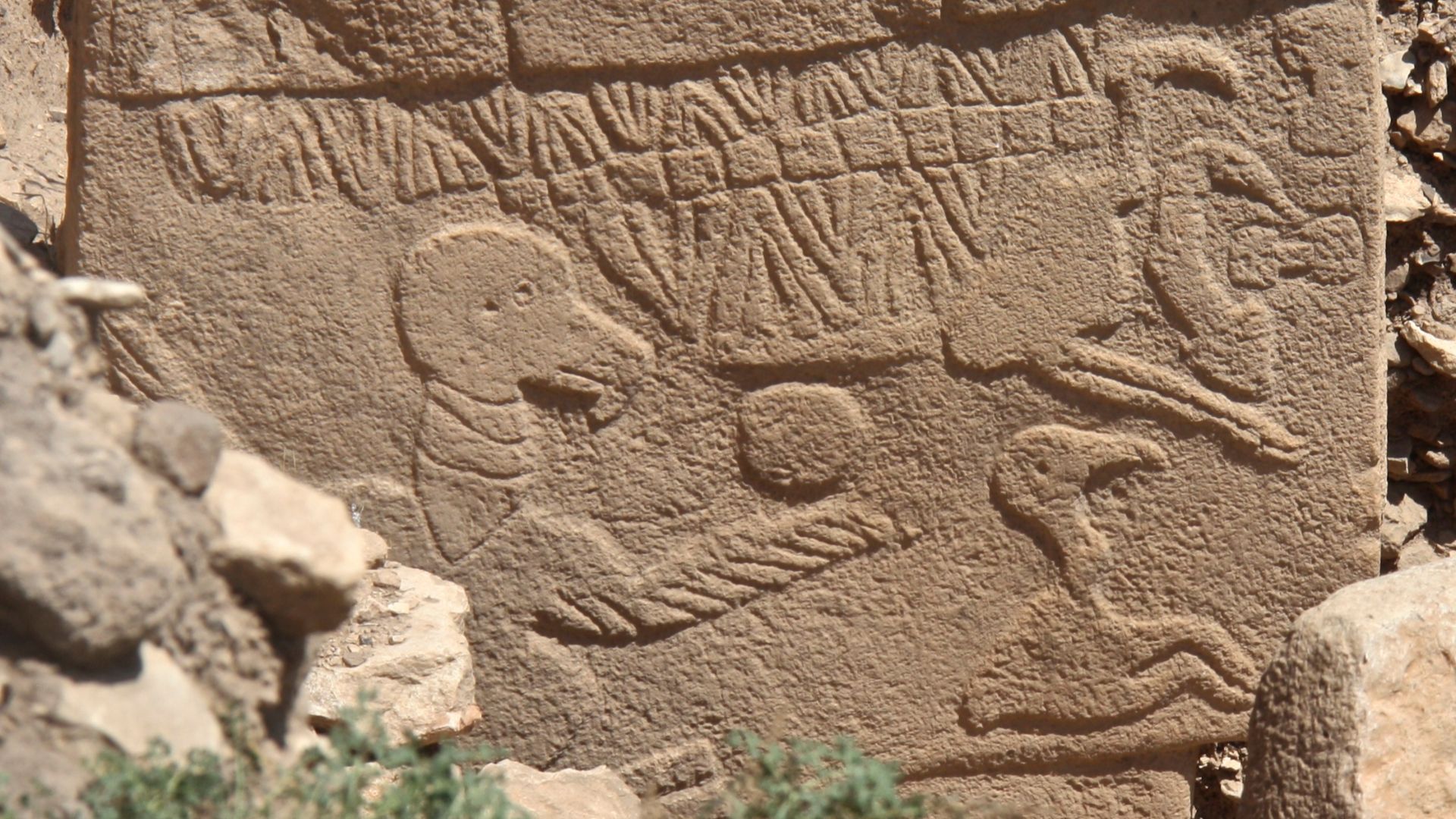 Sue Fleckney, Wikimedia Commons
Sue Fleckney, Wikimedia Commons
Selective Depictions
Curiously, the majority of the animals are depicted as male and have an “aggressive posture” in the carvings. There are very few carvings throughout the entire site that can be identified as being feminine. This is surprising considering the other subjects represented in the carvings.
Humans Amongst The Animals
There are also some humanoid carvings on the pillars. Some of these T-shaped monoliths have human arms carved into them and some have loincloths on the lower portion of the pillars.
A Masculine Inclination
In the case of two pillars set in a symbolic location within the architecture of the structures, the gender of the carvings can’t be identified. They seem to be men based on the belts carved into the pillars, a masculine attribute at the time. The variety of the carvings led to a spiritual theory.
Masculine Figures Supporting The Community
Schmidt thought the broadened top of the pillars represented the shoulders of a human. Since there is also a theory that the pillars held up roofs, this would have meant the human representations were headless by intention. This led Schmidt to theorize about the use of these pillars by ancient humans.
Decorations With A Purpose
Schmidt and zooarchaeologist Joris Peters both stated that the wide variety of creatures carved into the pillars must mean the people were not drawing on one particular iconography. Rather, with so many predators depicted, the carvings and the stones were intended to fend off evil or might have served as totems.
 Burkhard Mücke, Wikimedia Commons
Burkhard Mücke, Wikimedia Commons
Commemorating An Important Part Of History
In 2018, Göbekli Tepe became a UNESCO World Heritage Site. It was appointed based on its “universal value” as “one of the first manifestations of human-made monumental architecture”. Based on Schmidt’s ground-penetrating radar, there’s still much more to uncover.
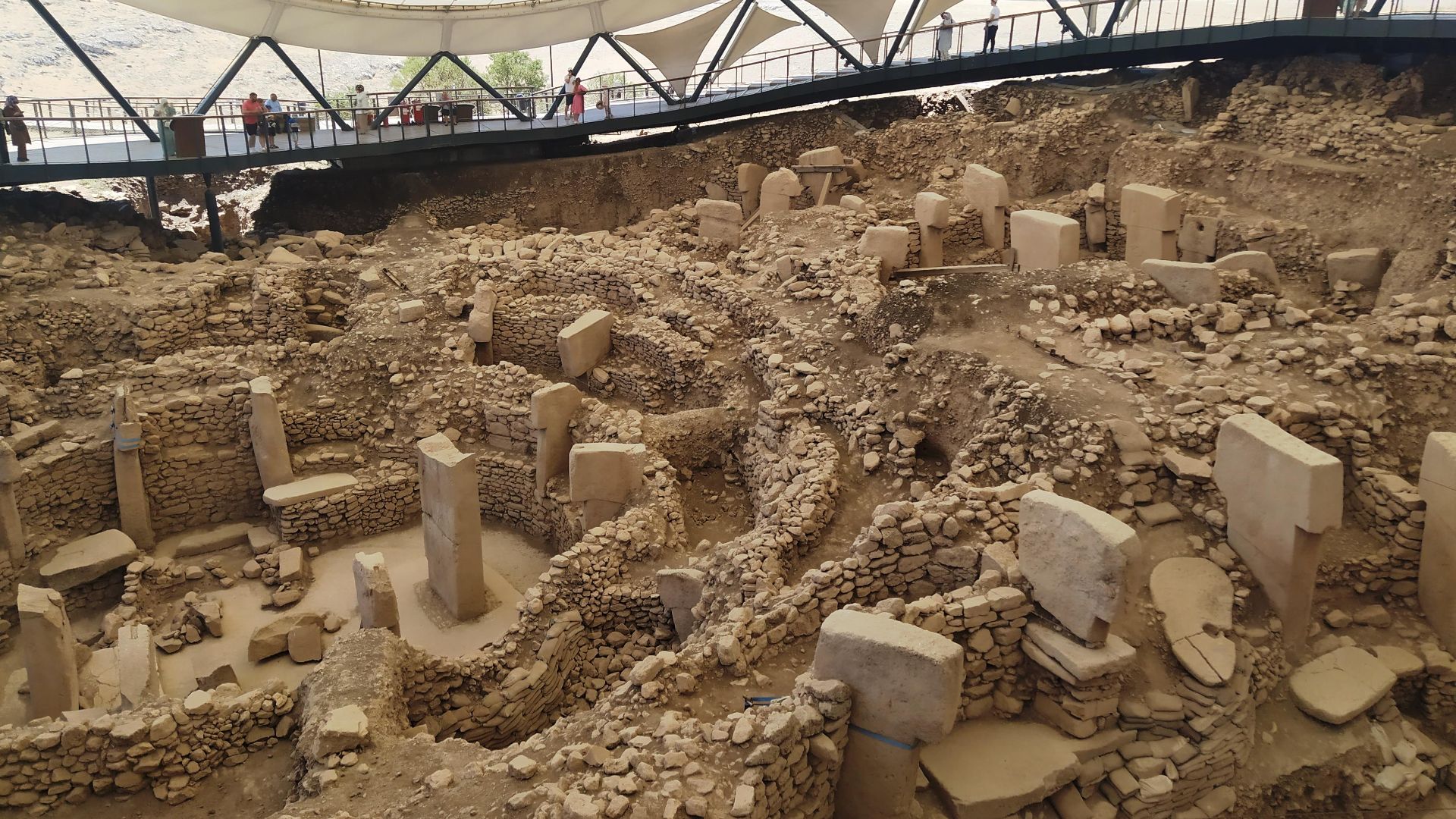 Radosław Botev, Wikimedia Commons
Radosław Botev, Wikimedia Commons
Special From Top To Bottom
Göbekli Tepe is a unique look at the “innovative” construction techniques used by ancient humans. This includes the use of the “decorated T-shaped pillars” that also serve to provide architectural support to the site.
Shared History
Göbekli Tepe shares similar qualities with other Neolithic sites in the Upper Mesopotamian area. Because of this, UNESCO believes there must have been a “close social network” between groups within the region. Schmidt reinforced this by describing other ancient settlements located near the site, one even featuring the “world’s oldest domesticated strains of wheat”.
Always More To Learn
Only about 10% of Göbekli Tepe has been excavated. Since its initial investigation in the 90s, there have been protective structures erected around and above to protect from human influence and climate exposure. The site is incredibly significant, which led to this amazing acknowledgment.
You May Also Like:
The Daily Lives Of Prehistoric Humans
Ancient Civilizations That Still Influence Us Today
The Cave Markings That Changed What We Know About The Neanderthals

